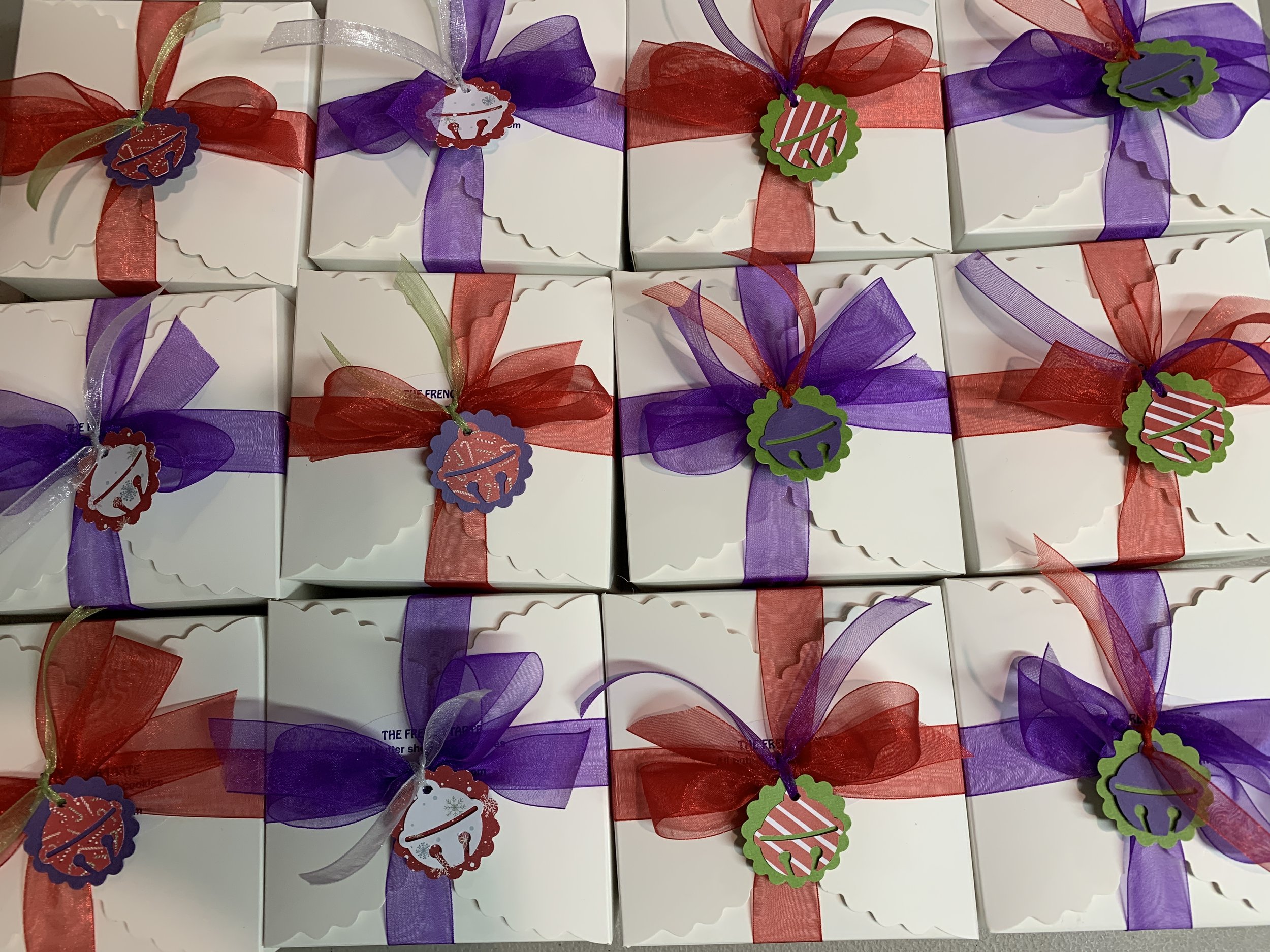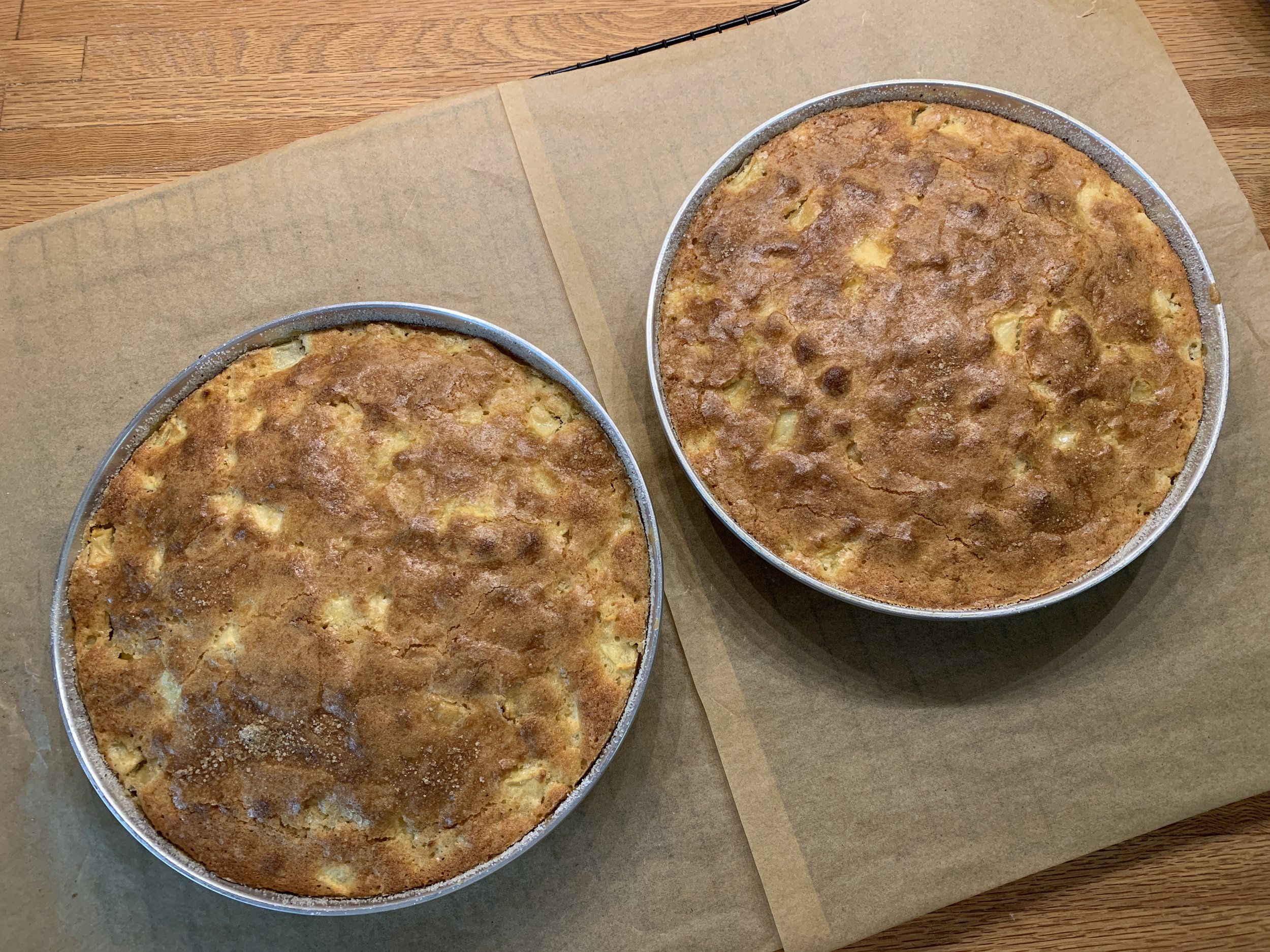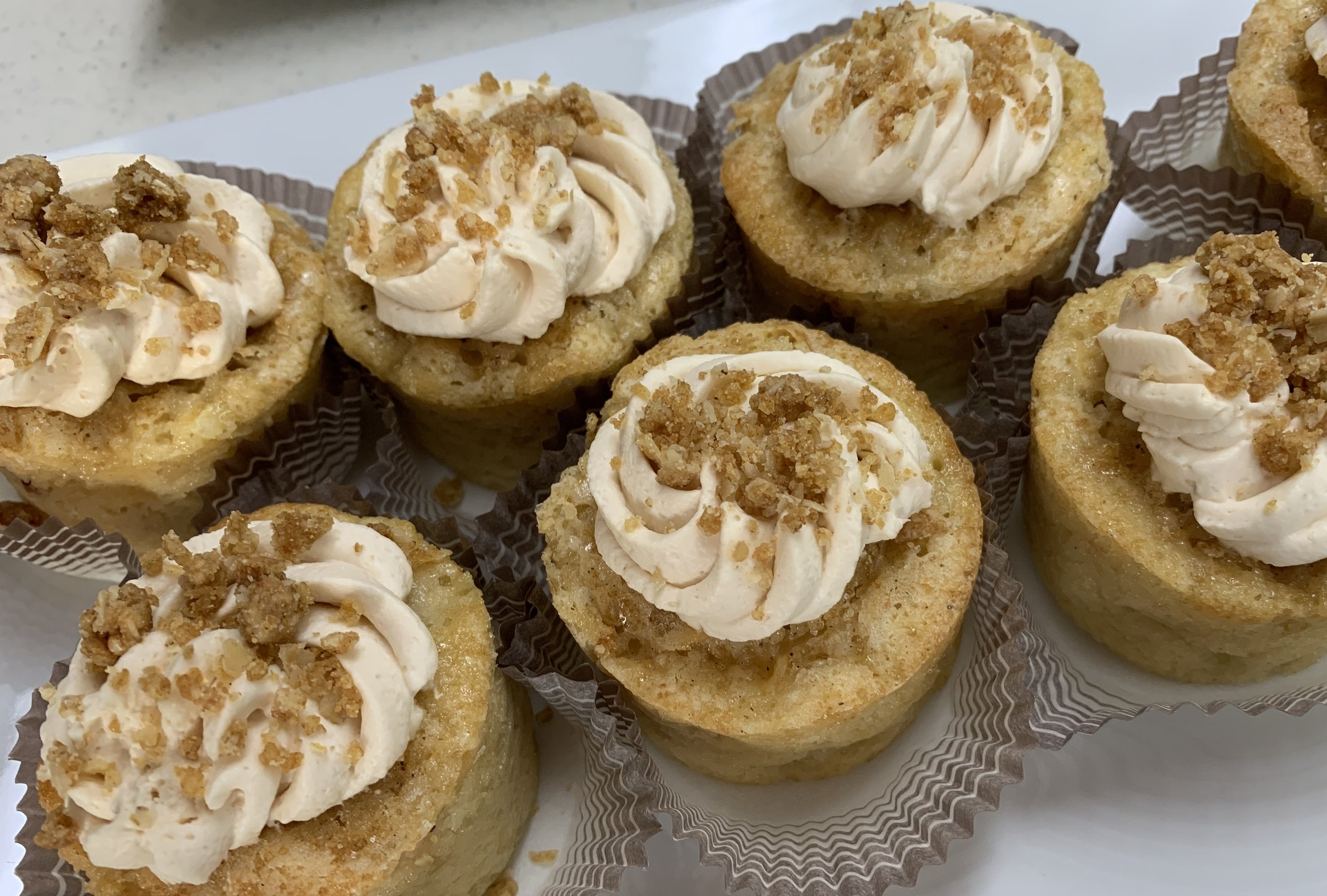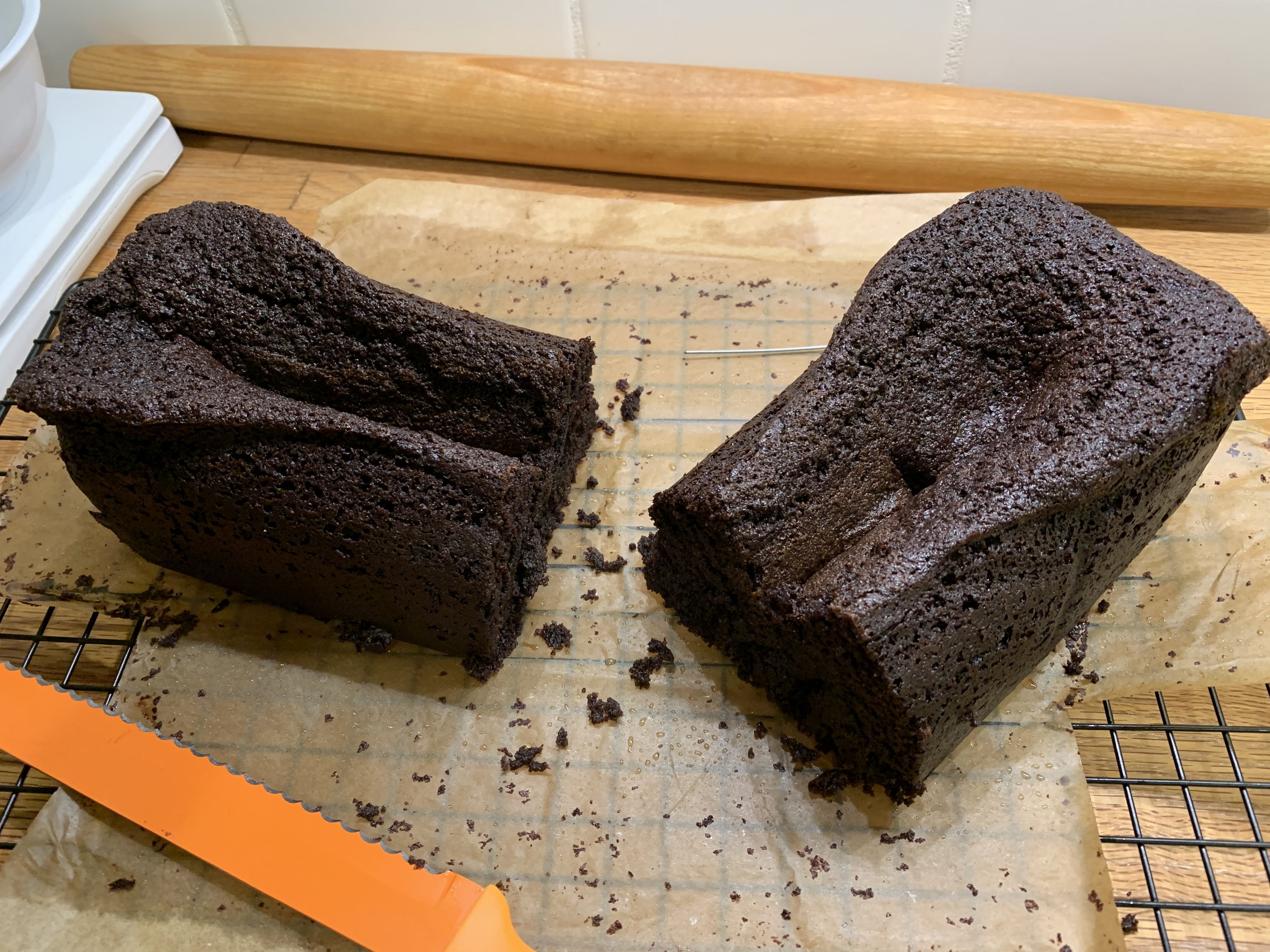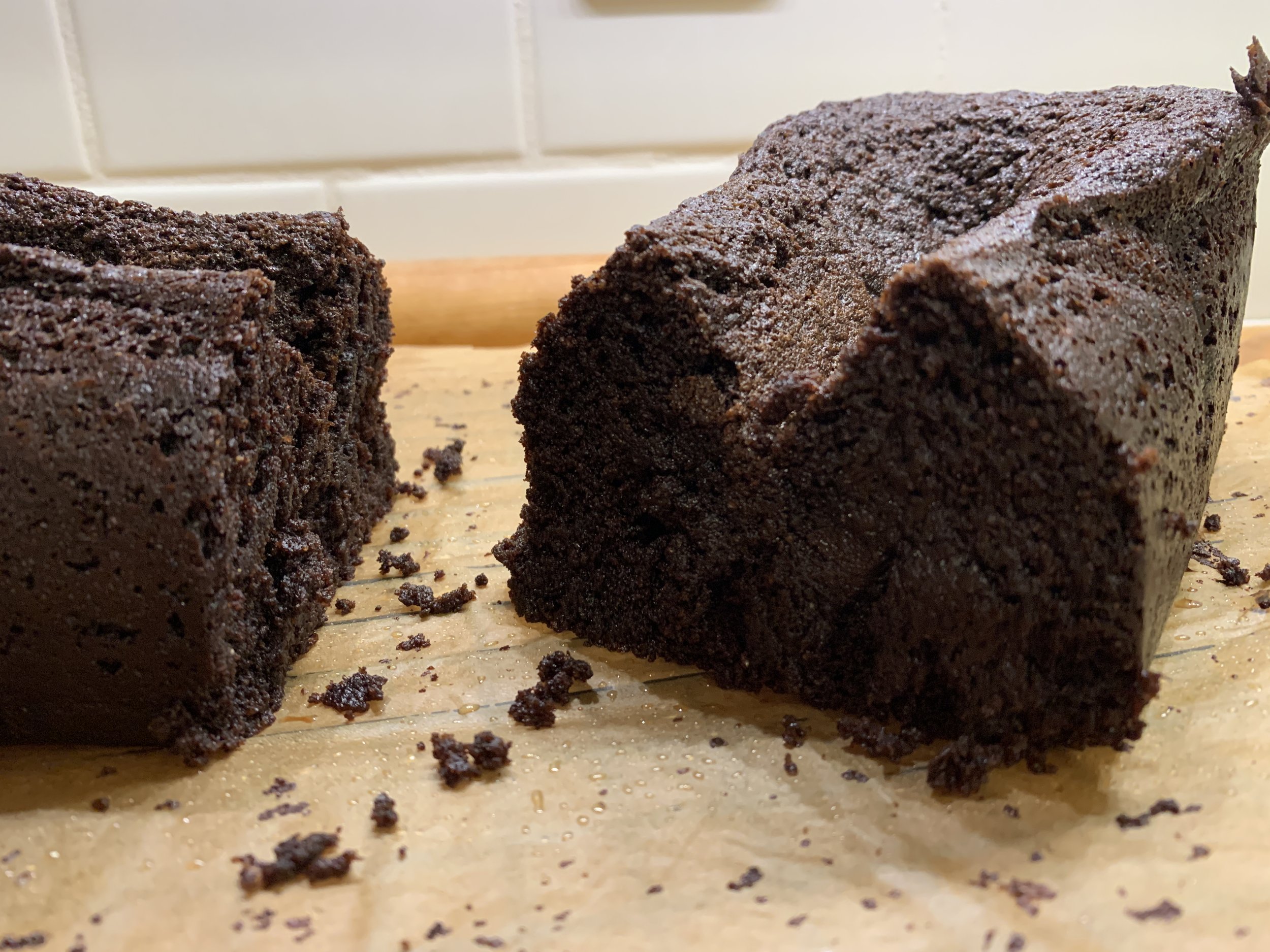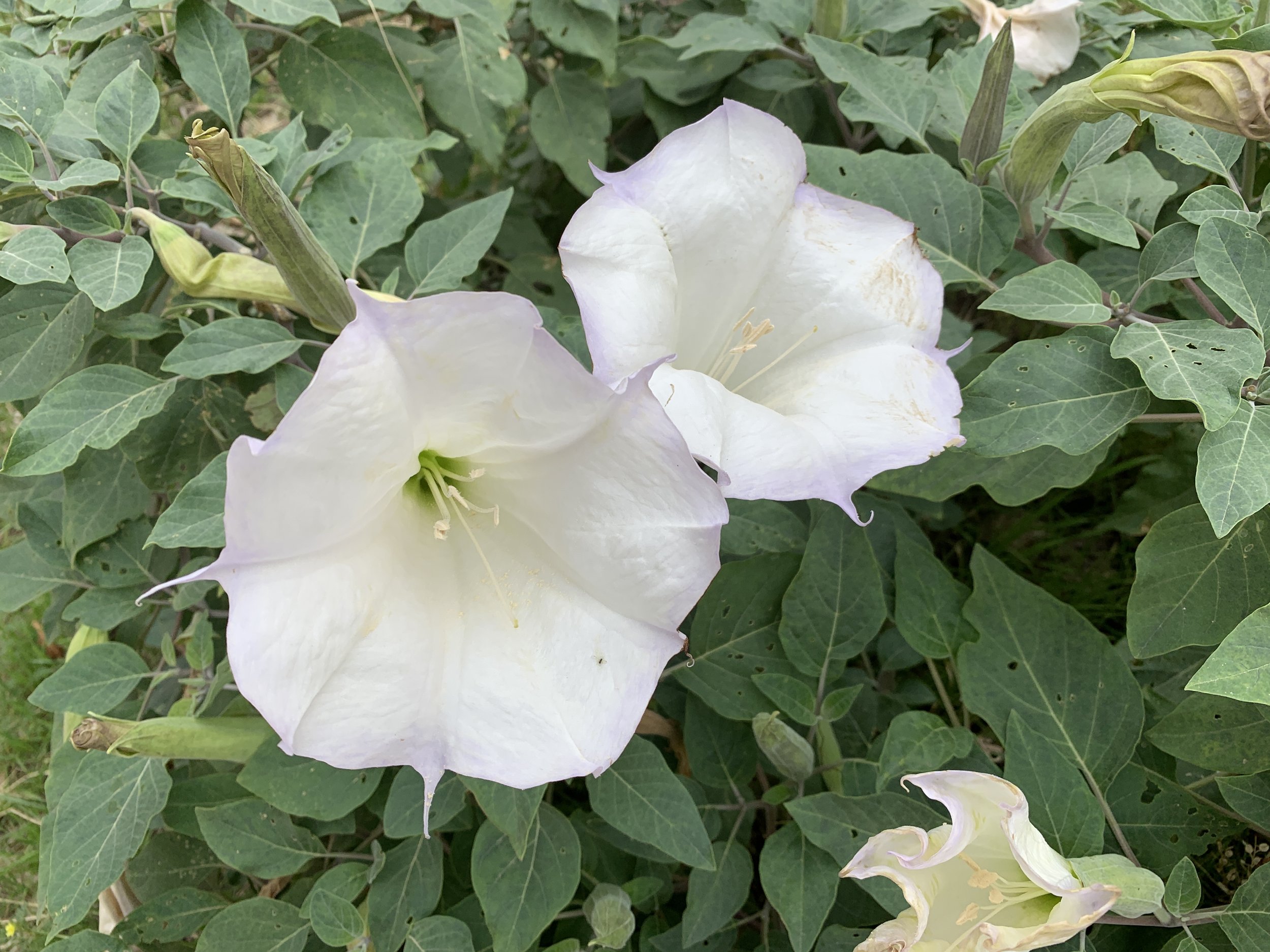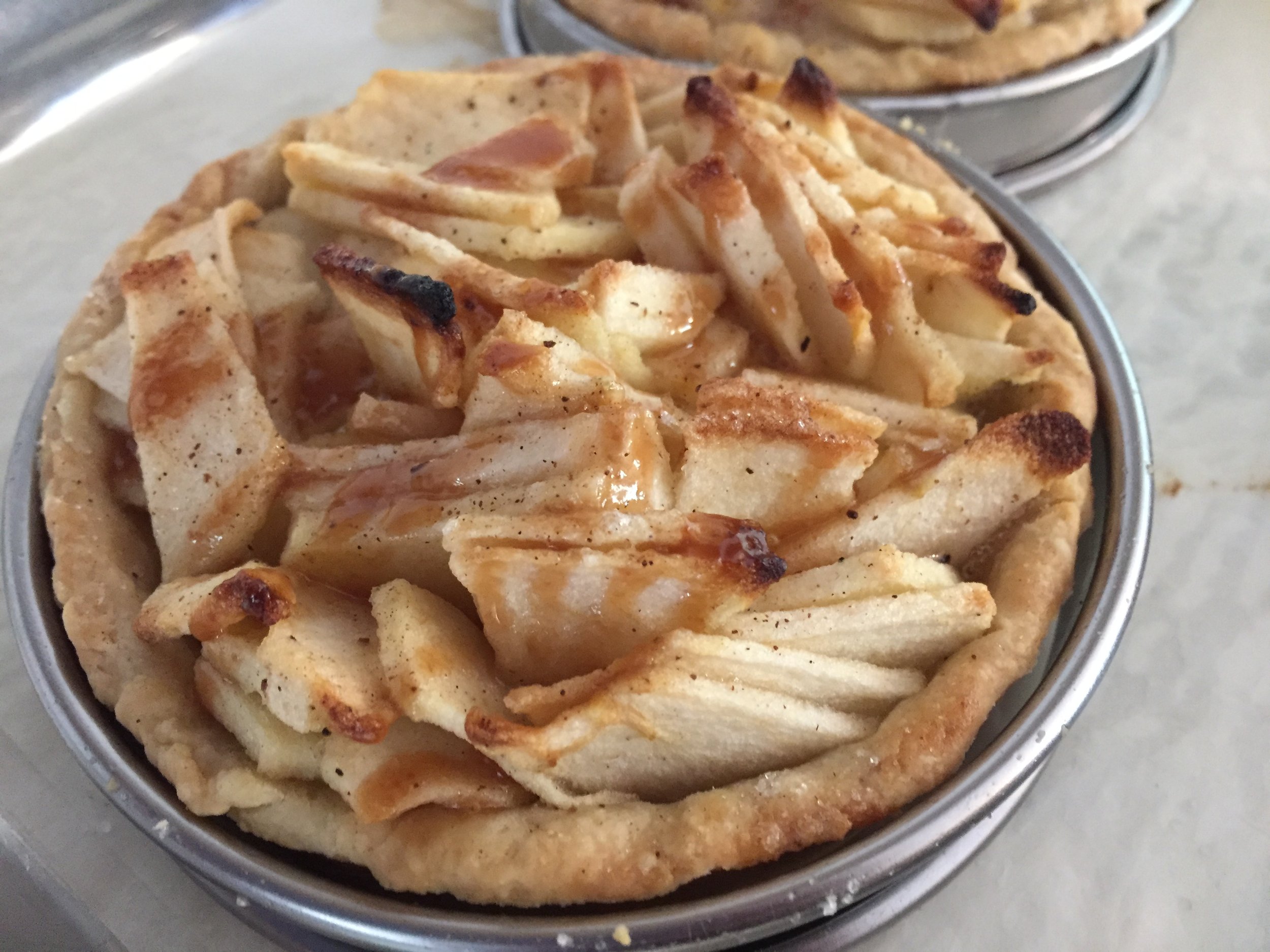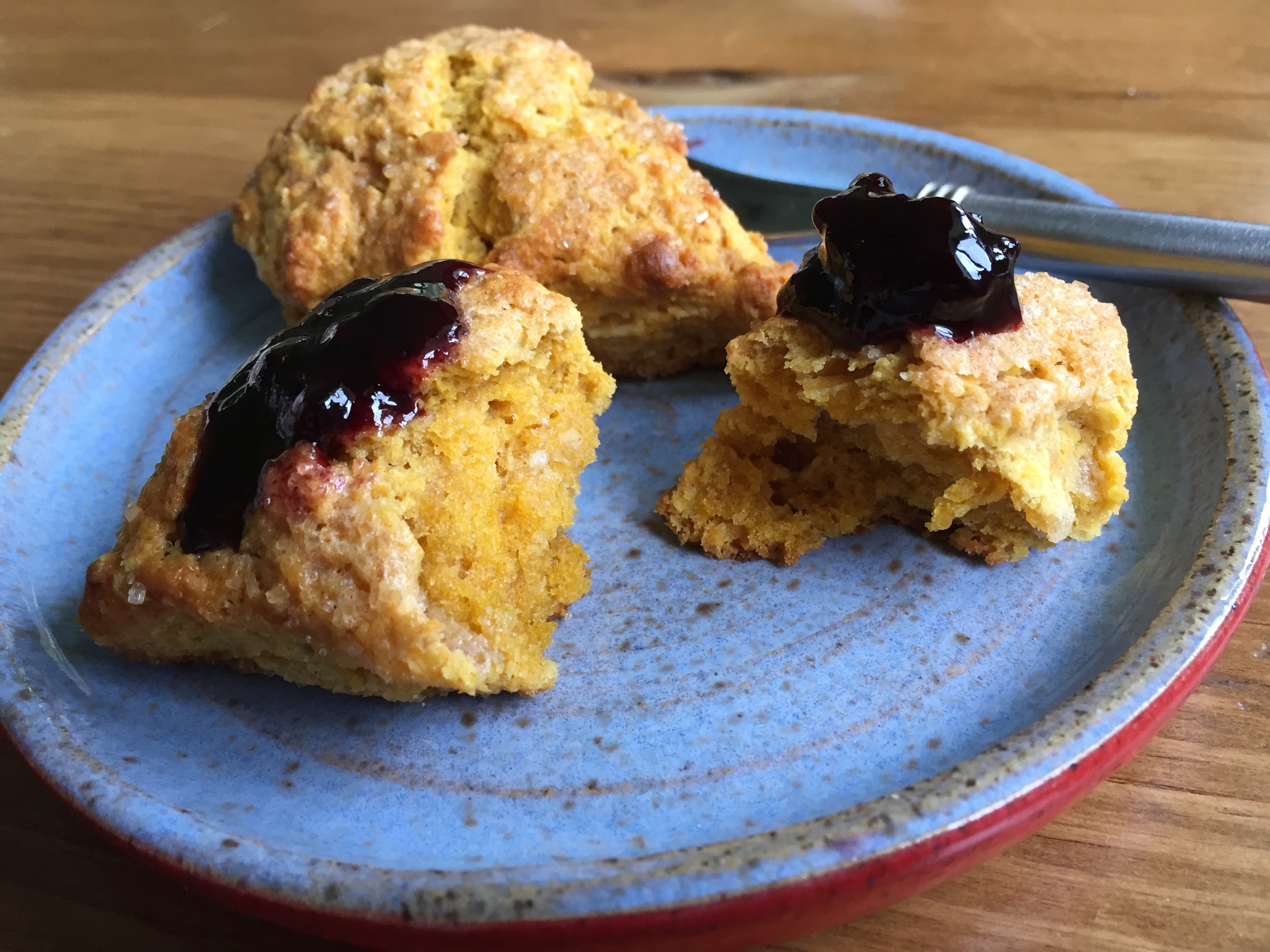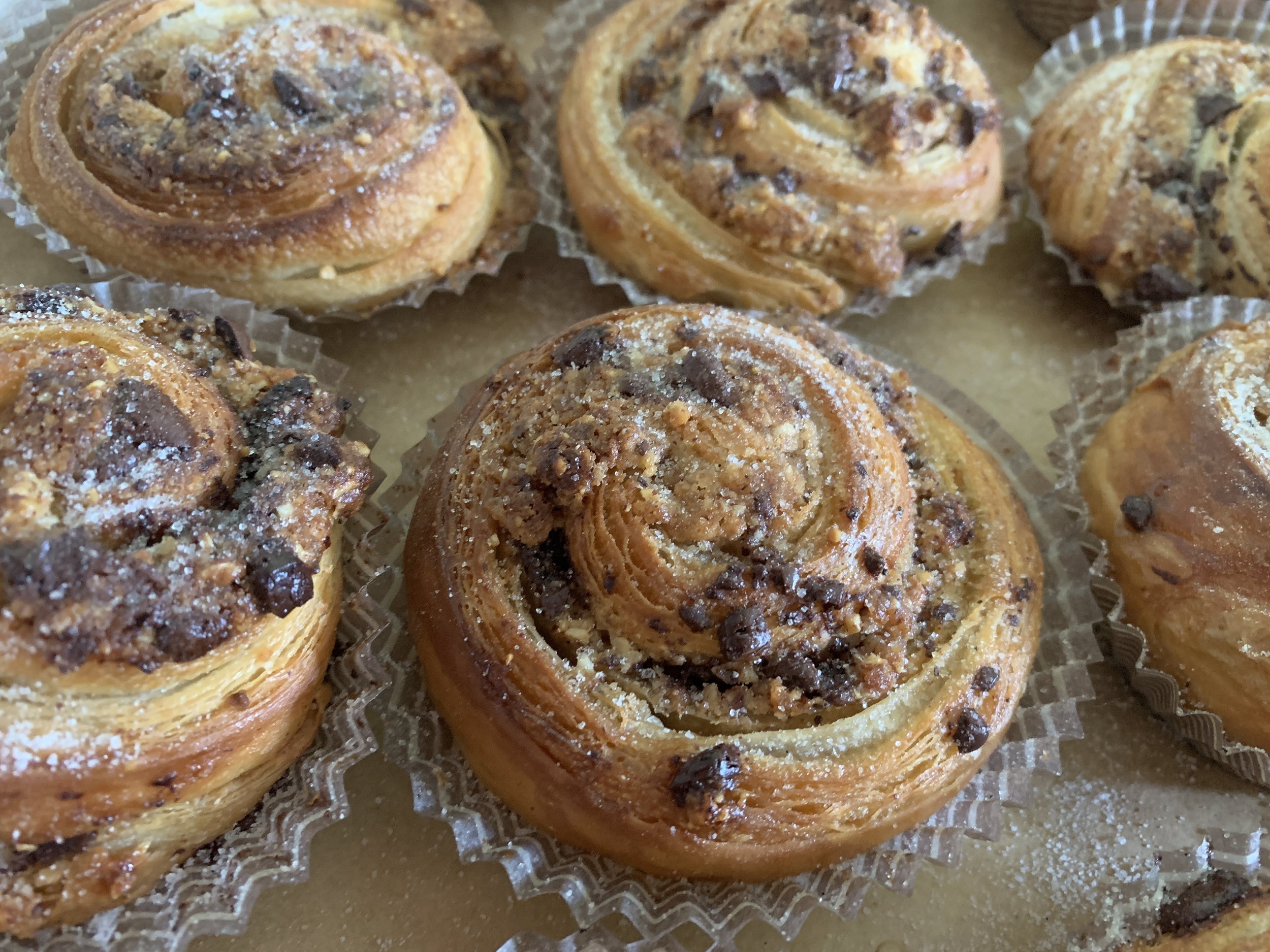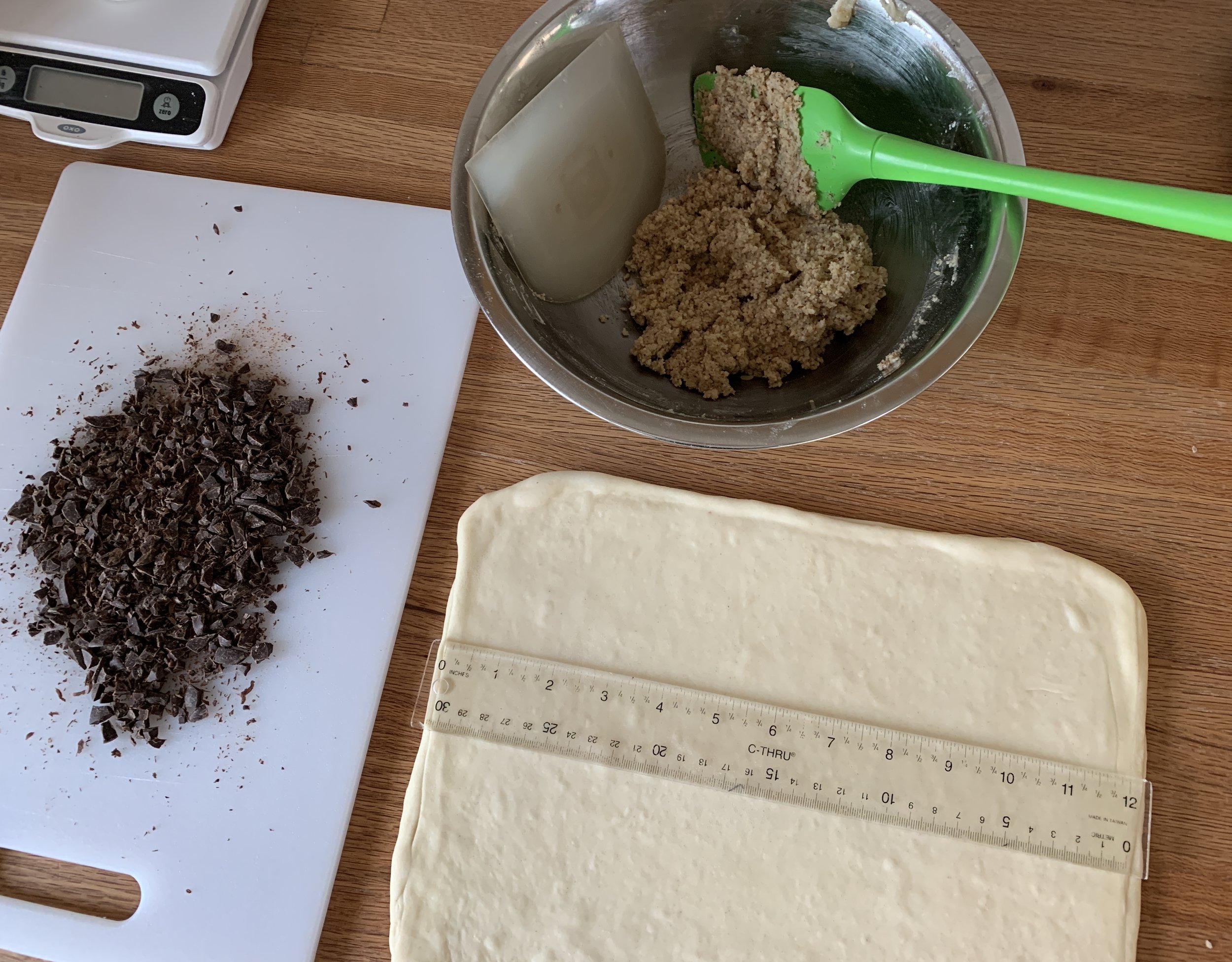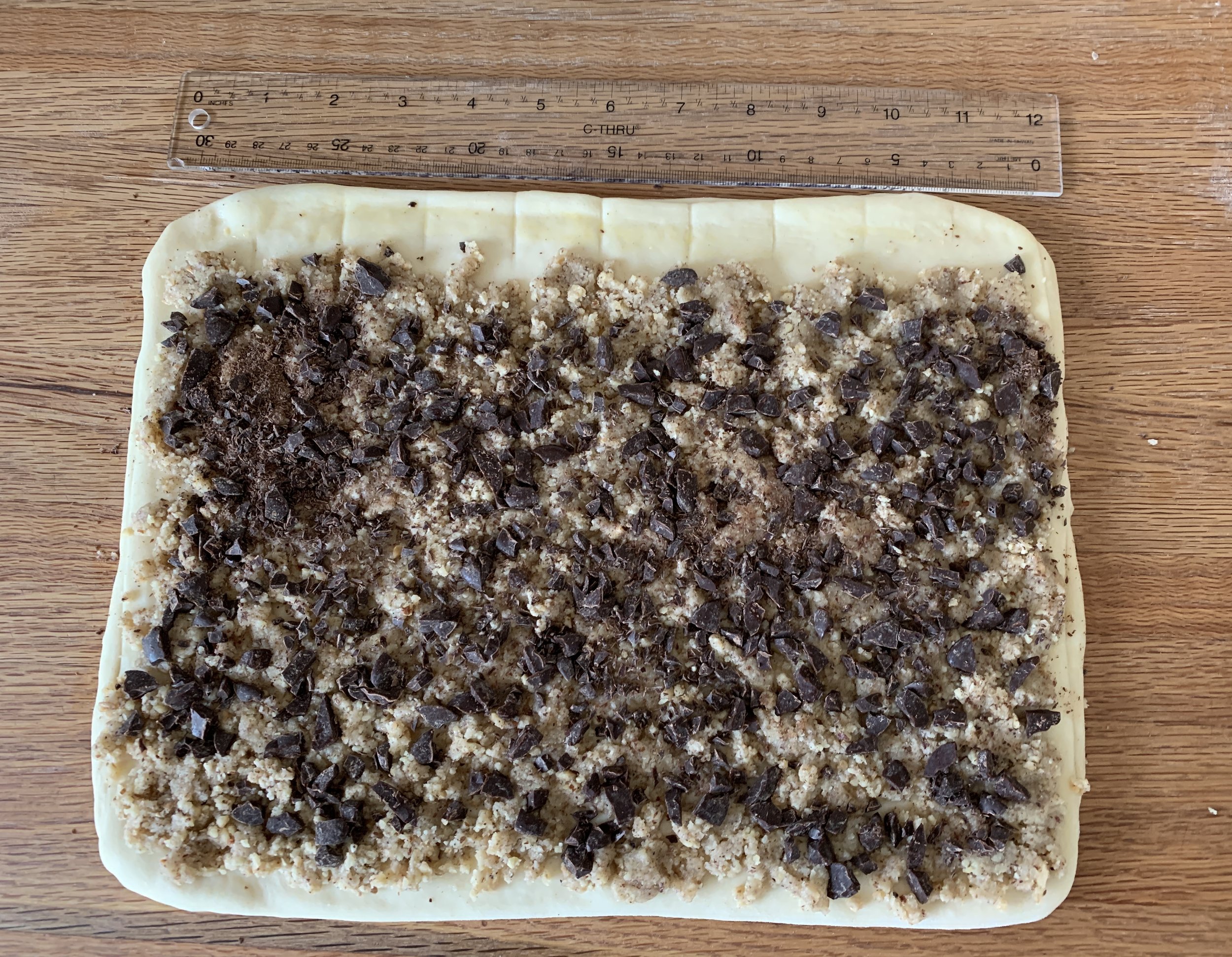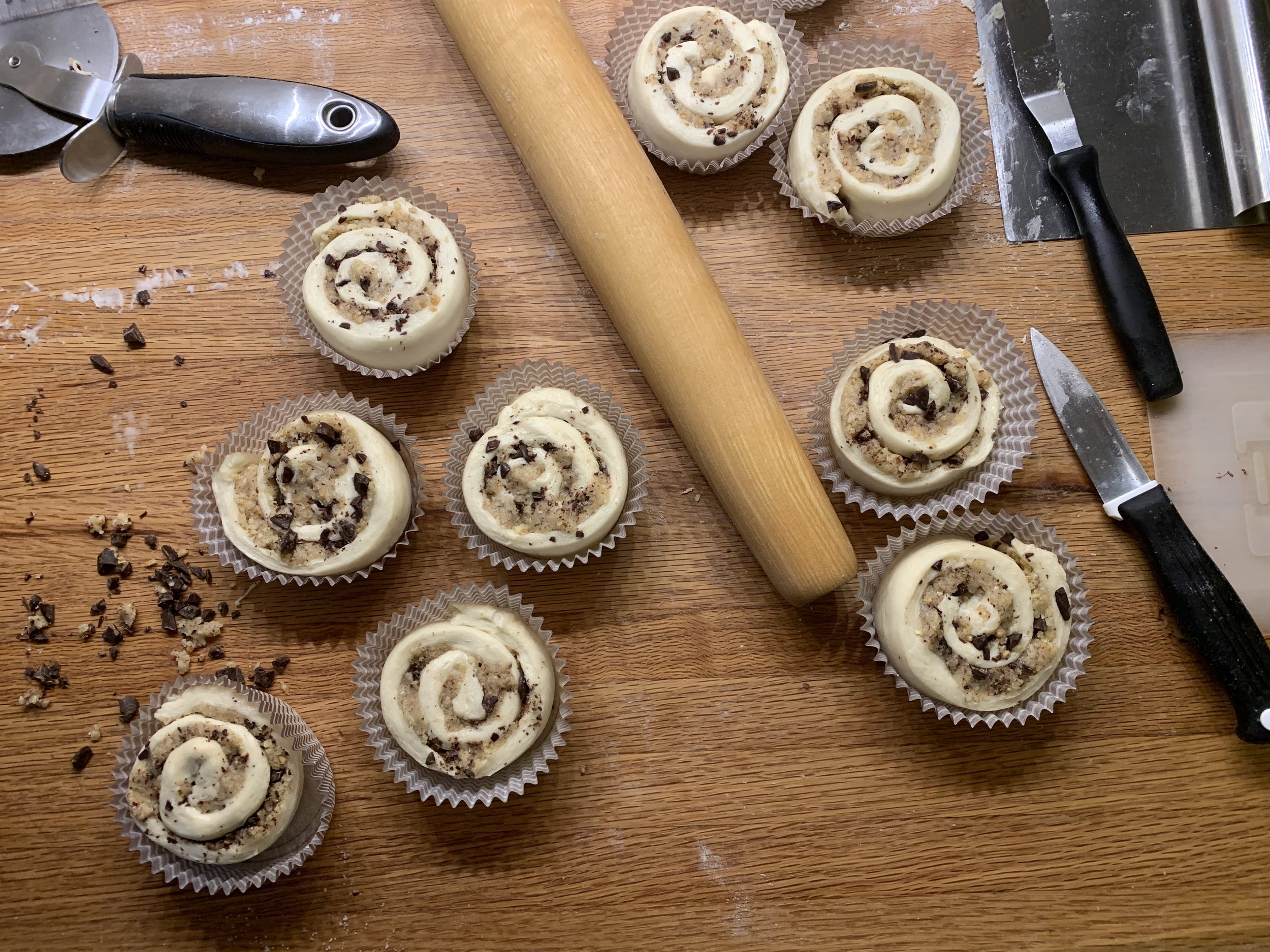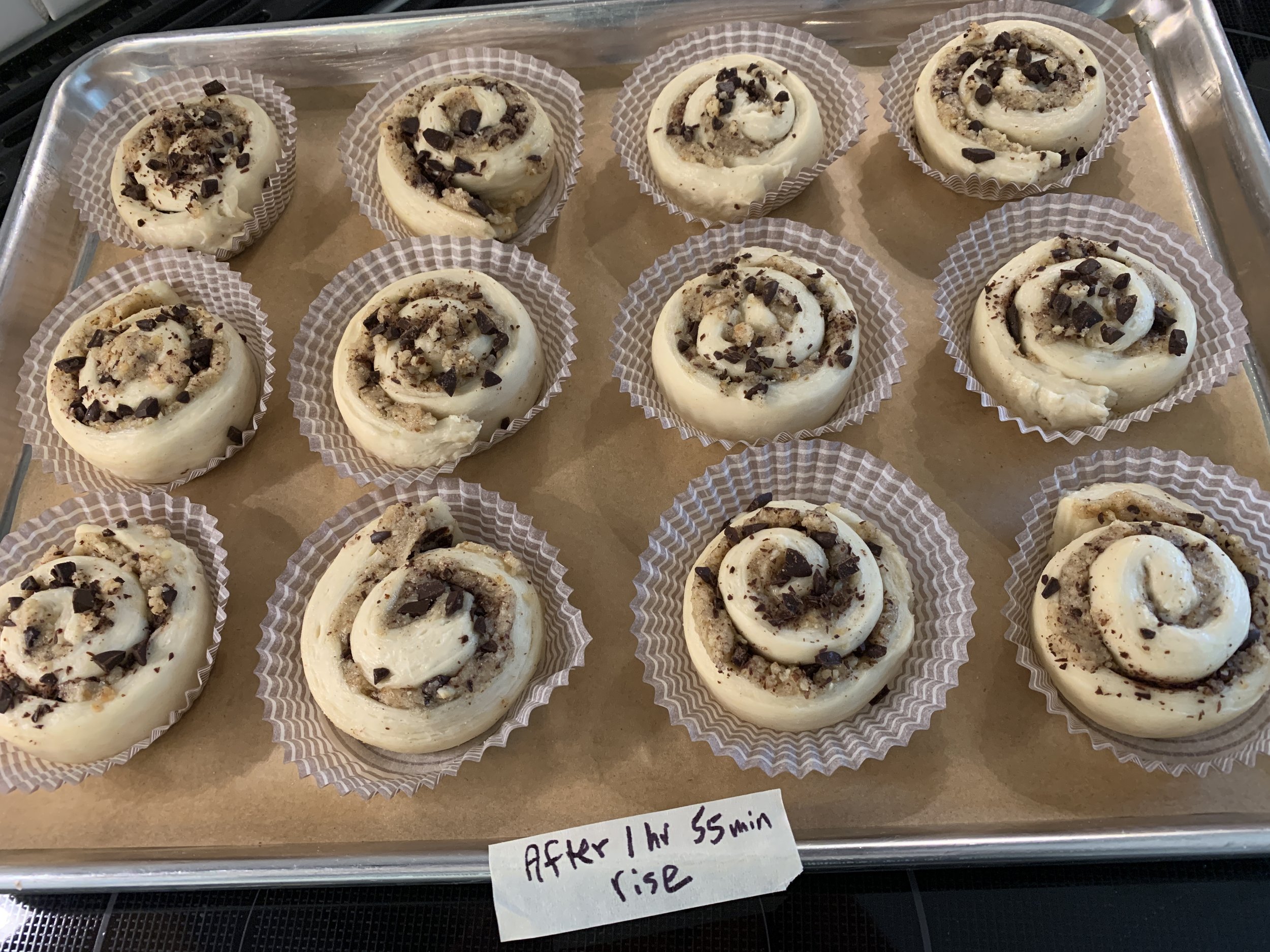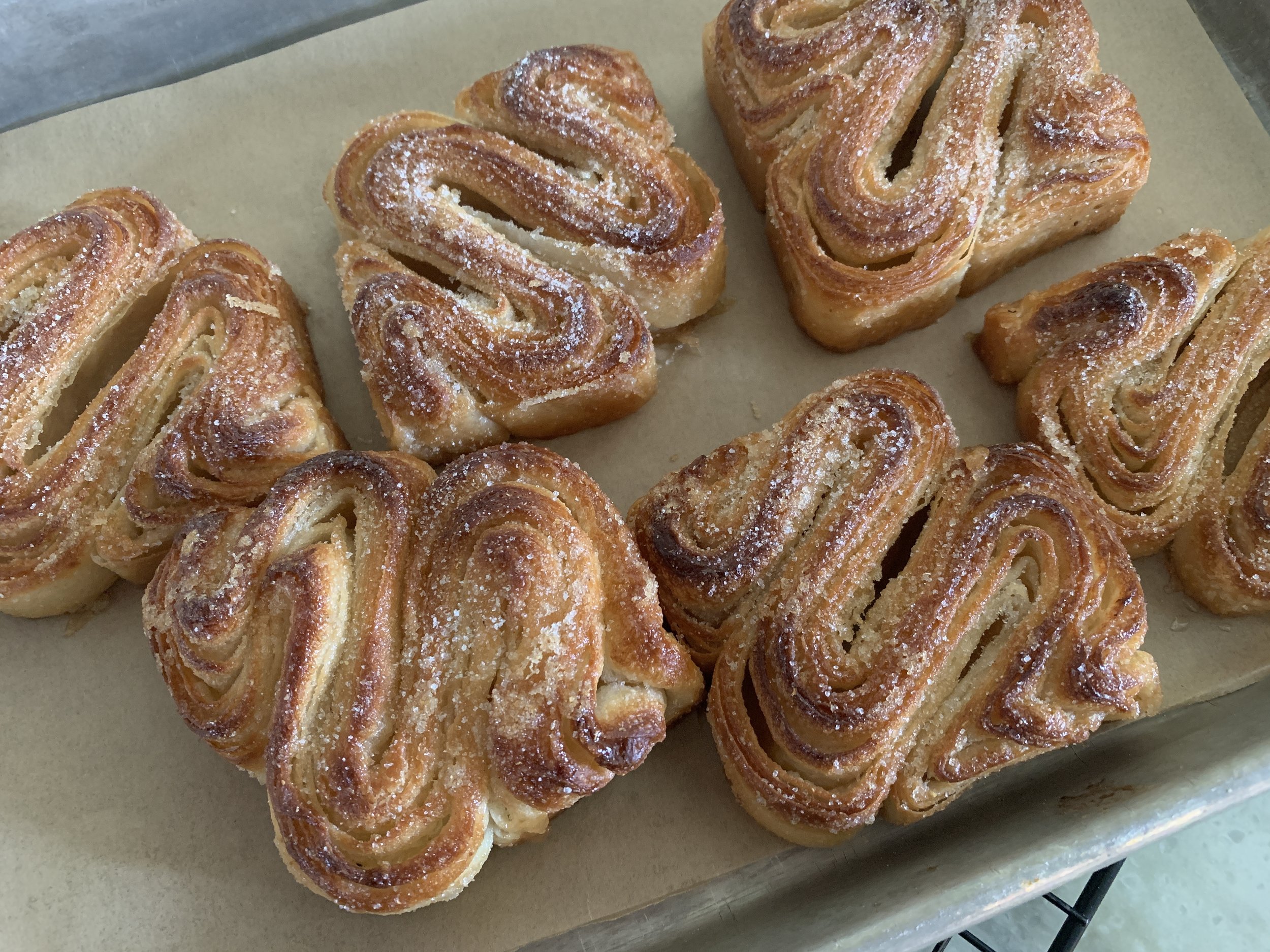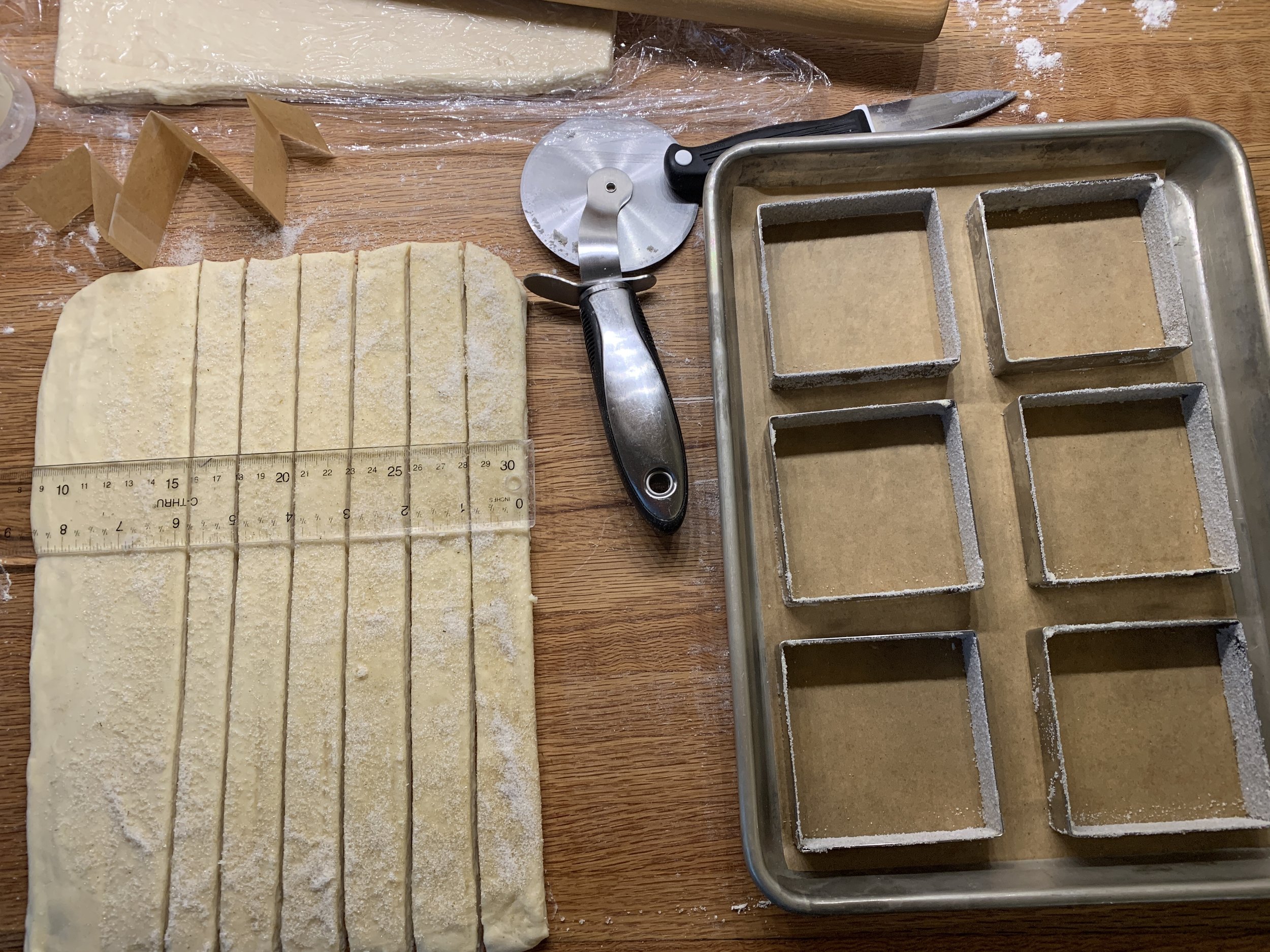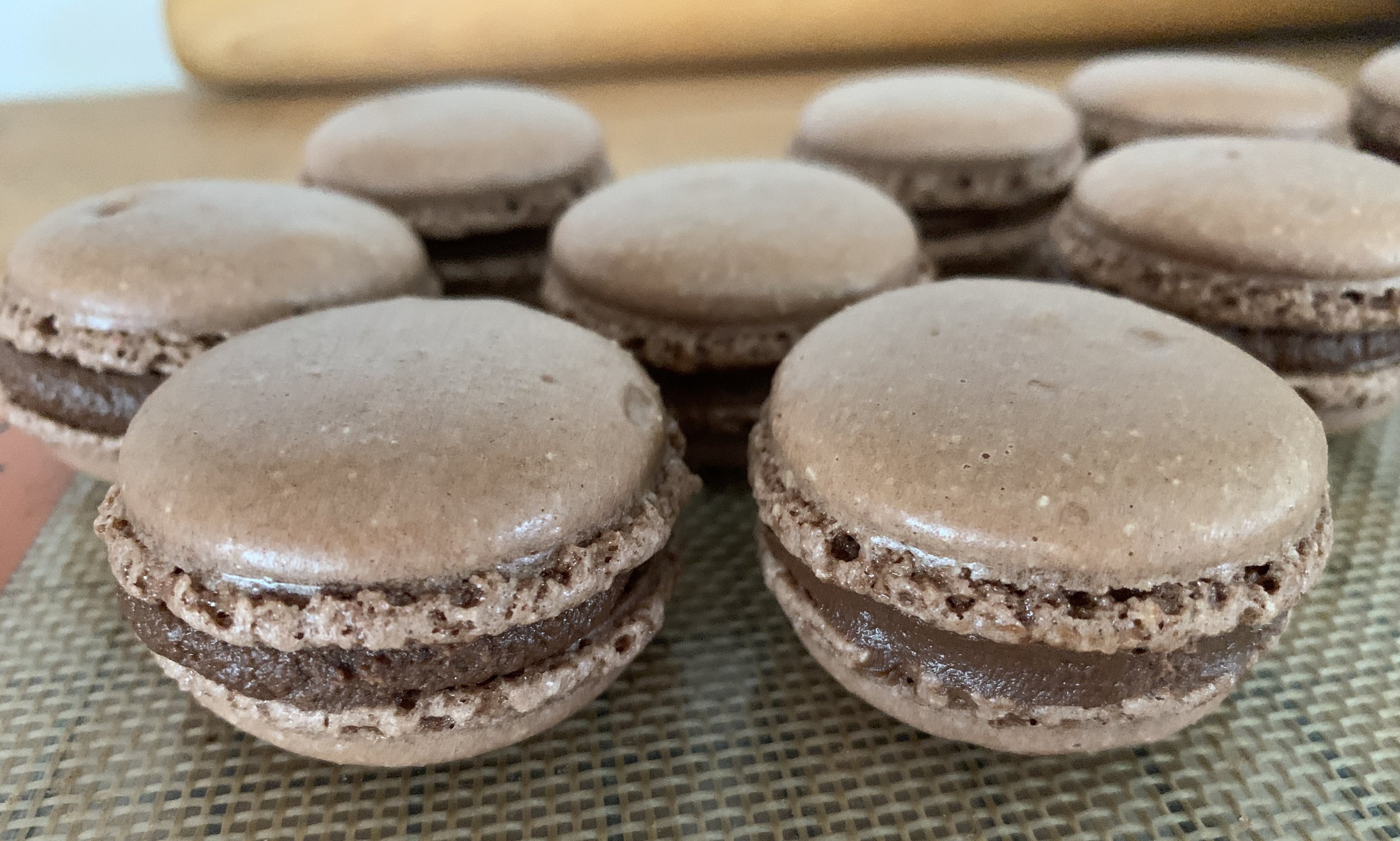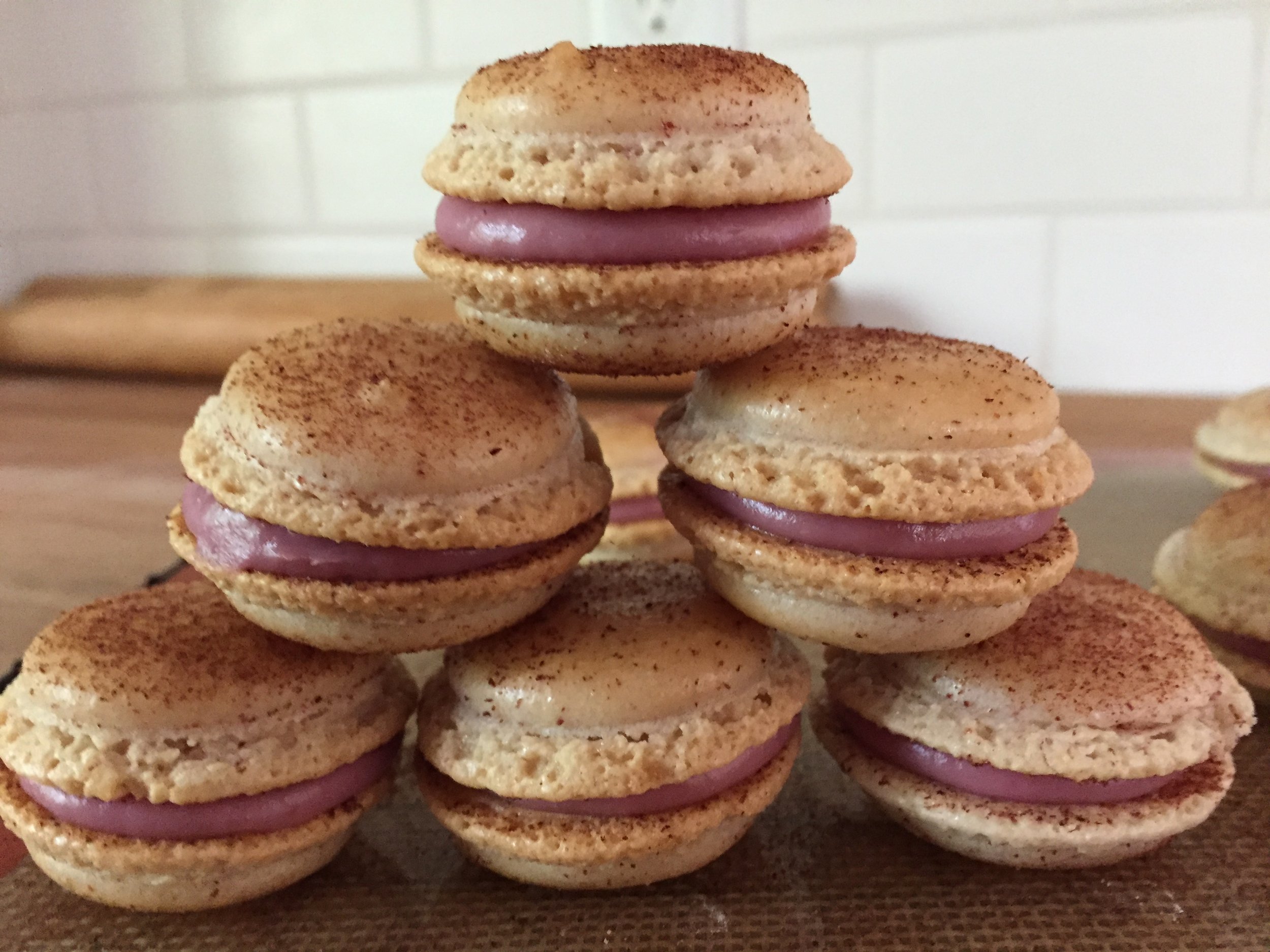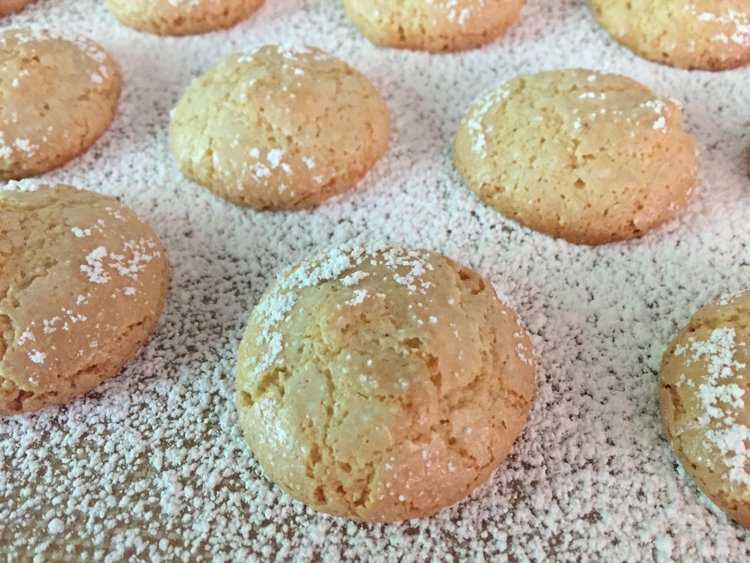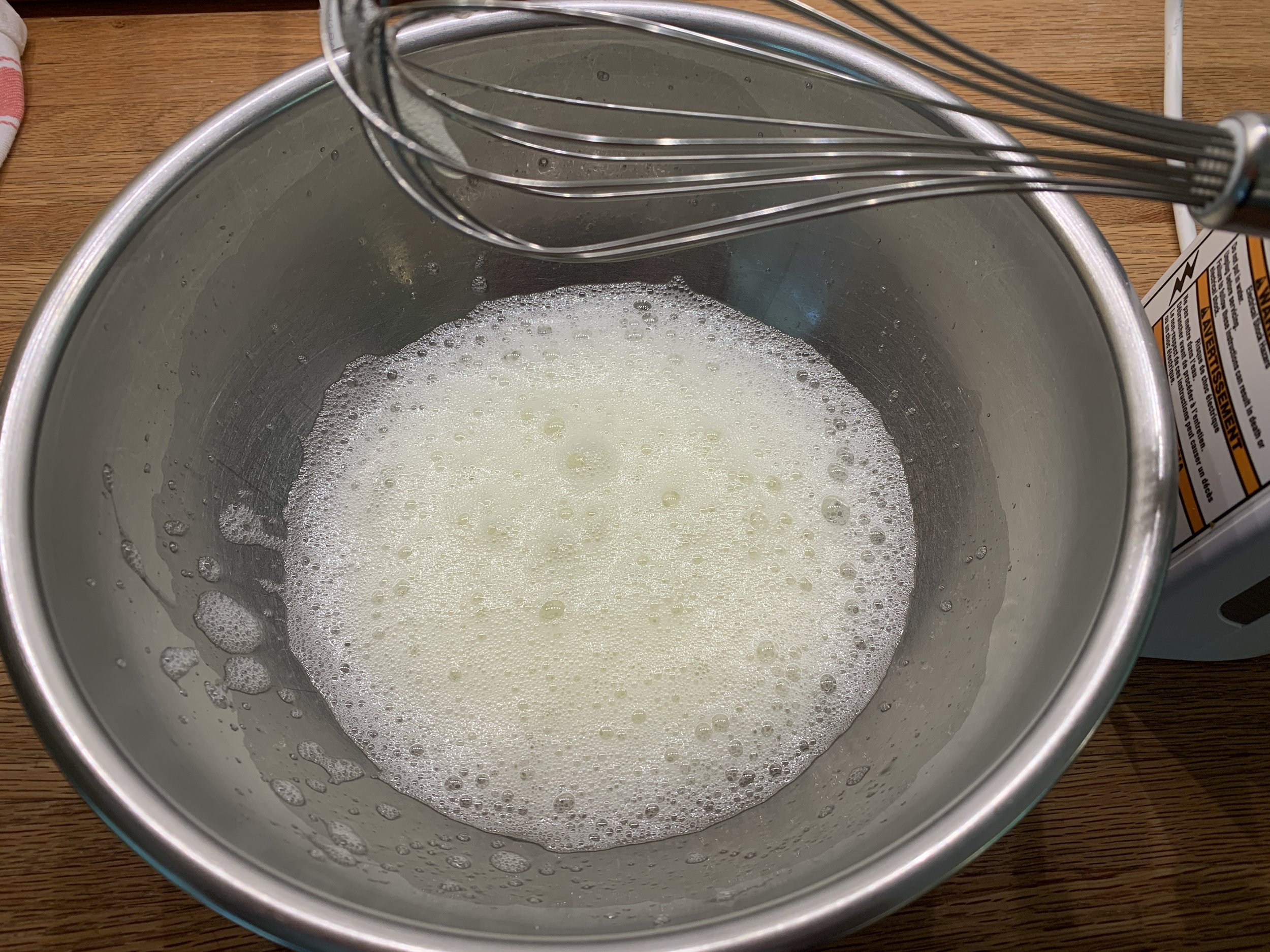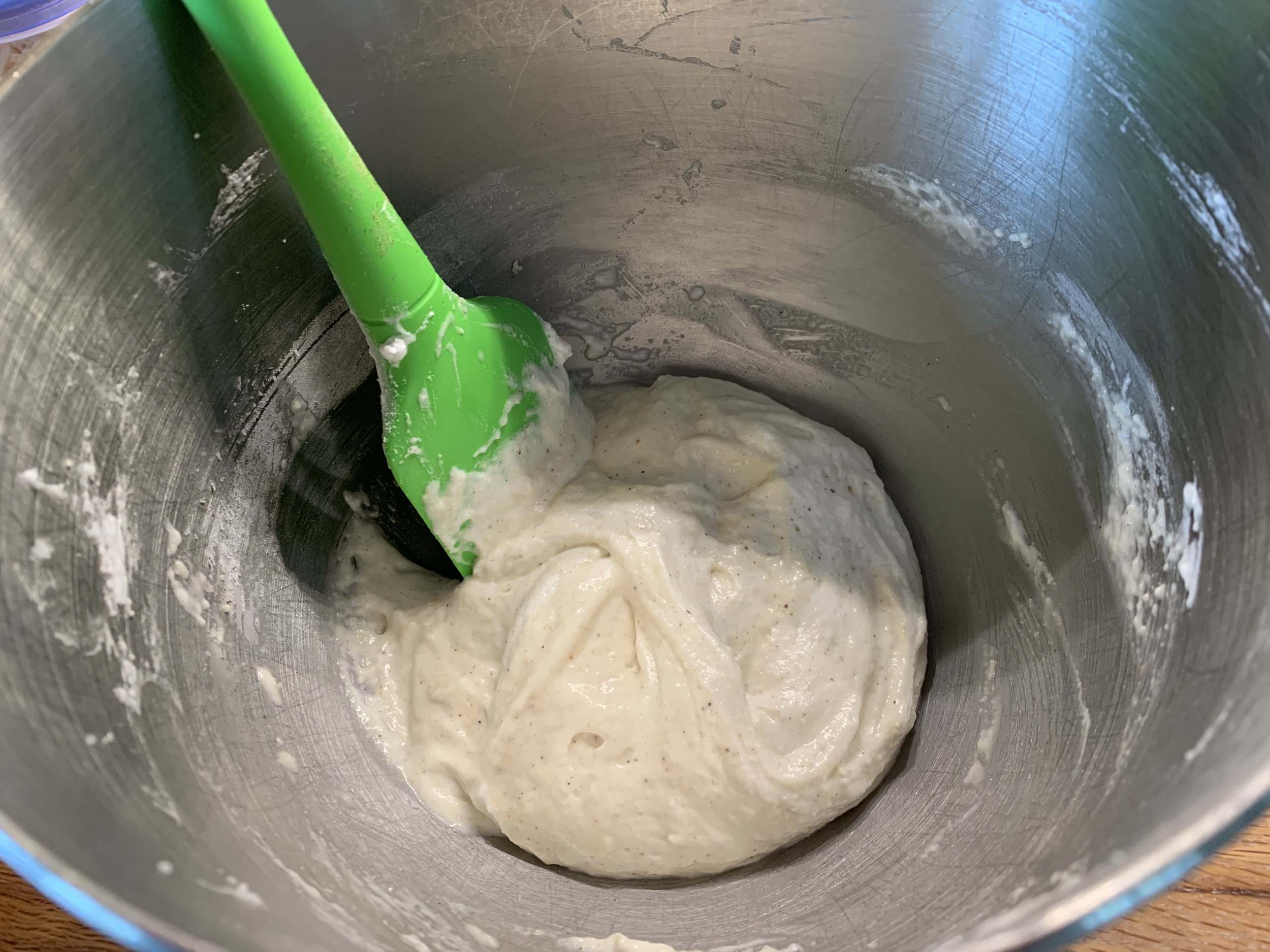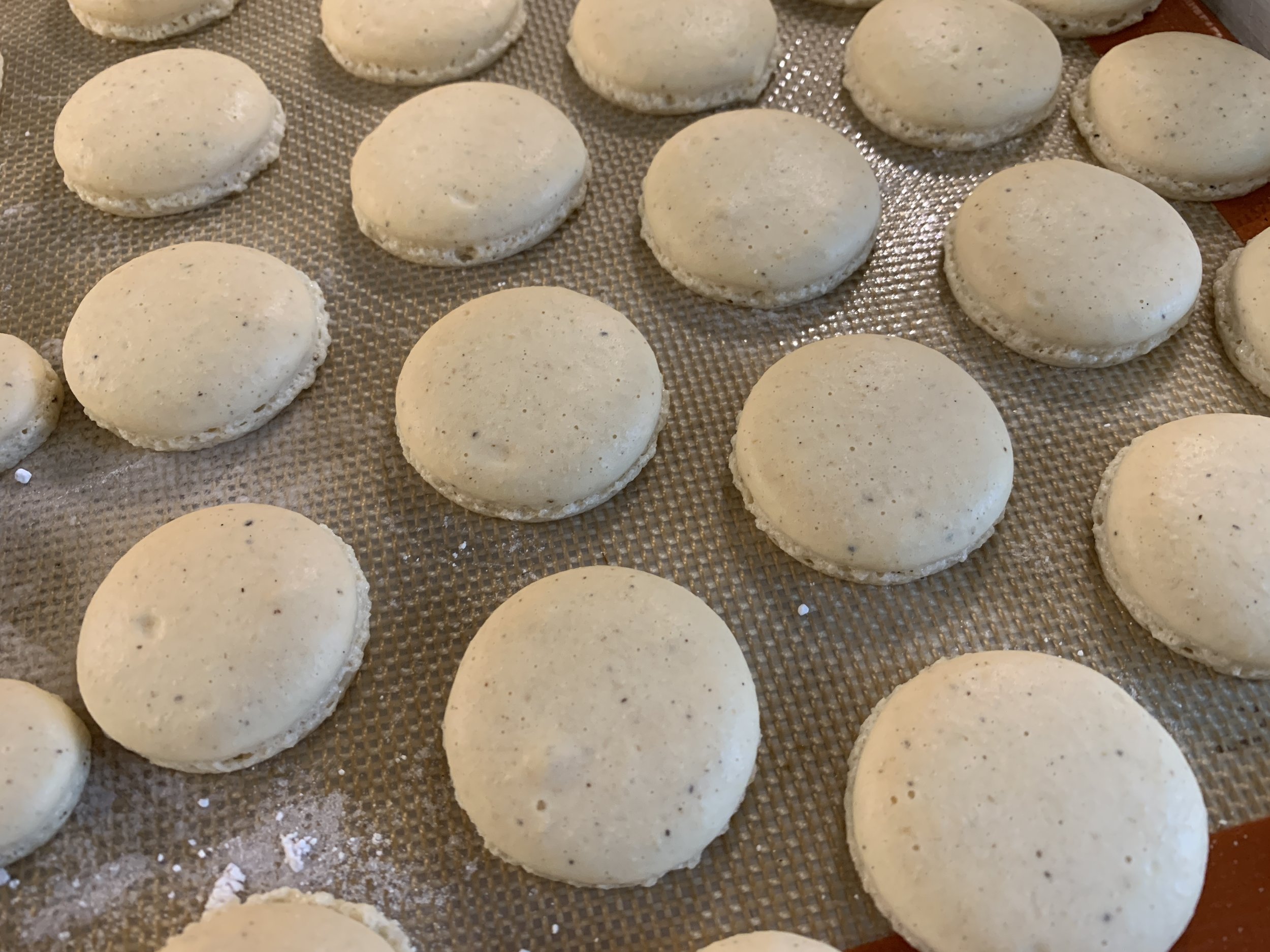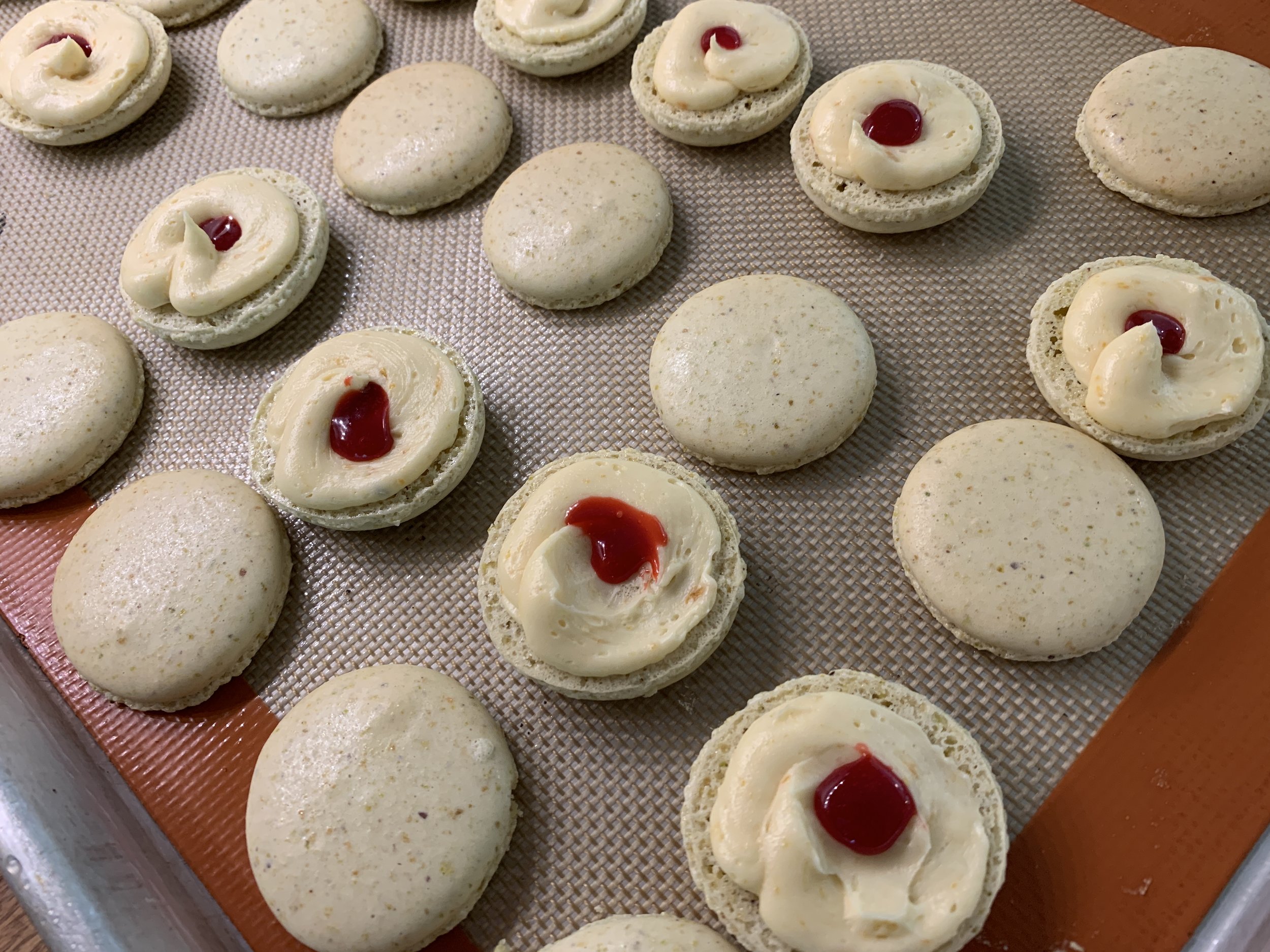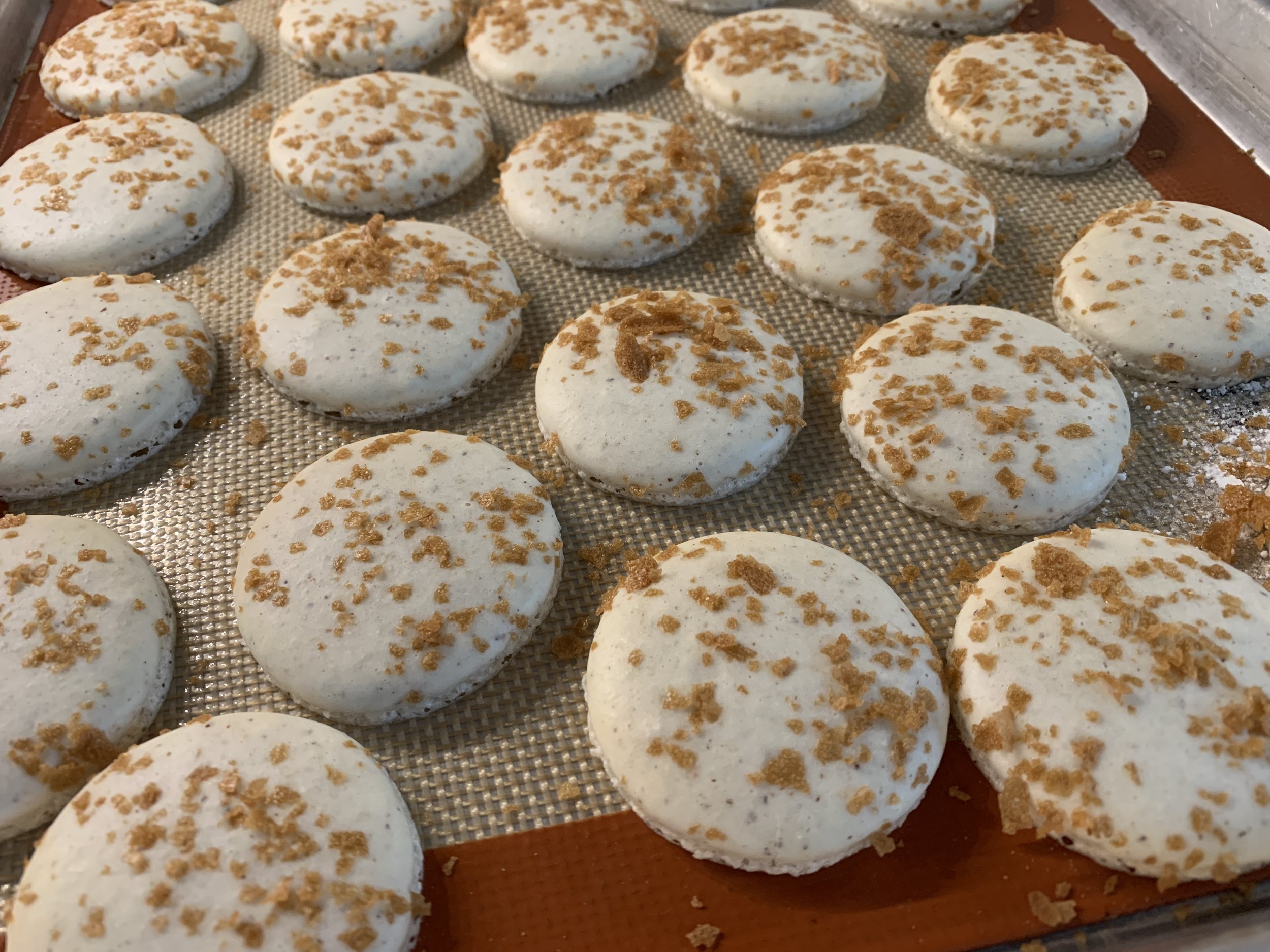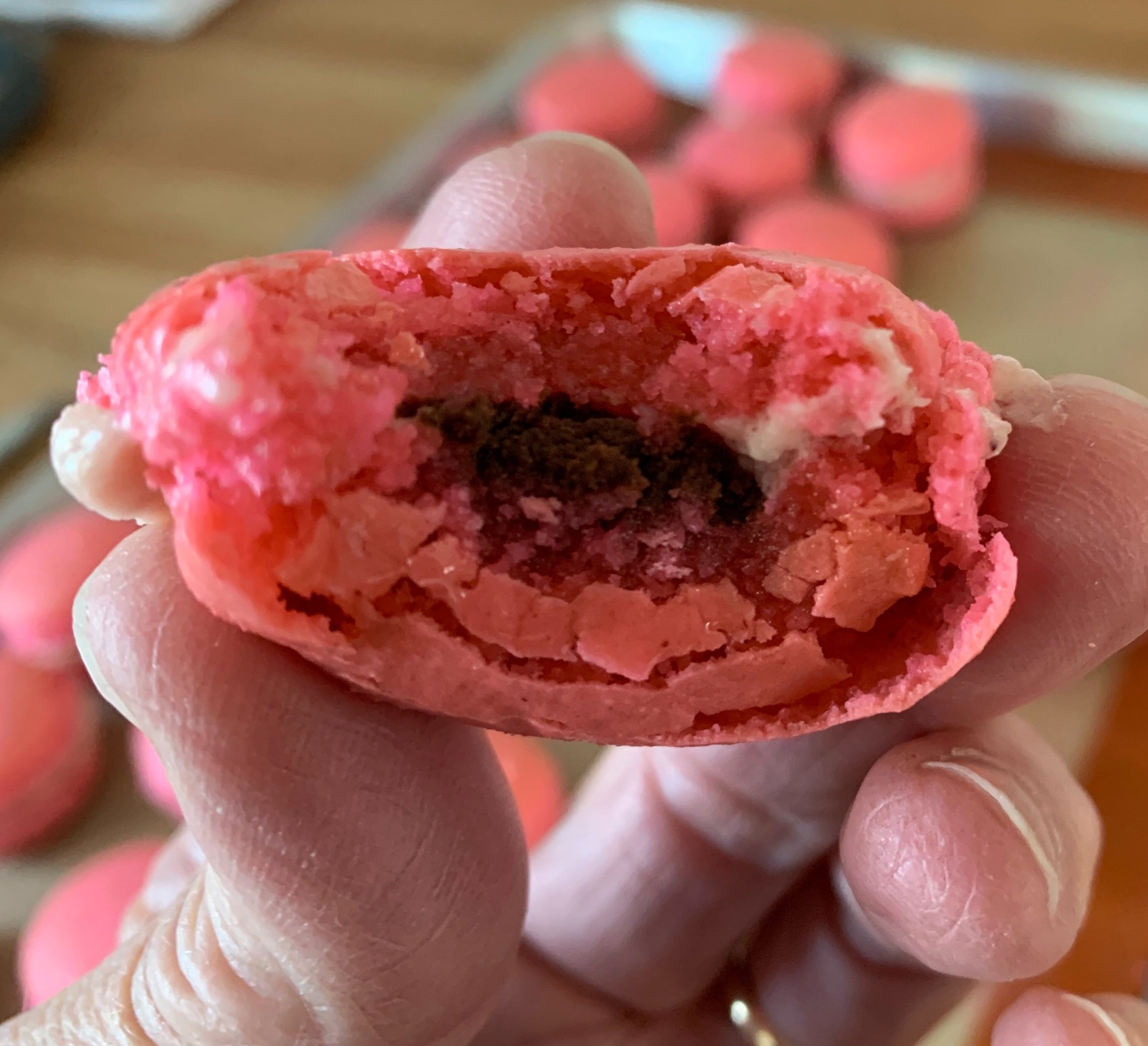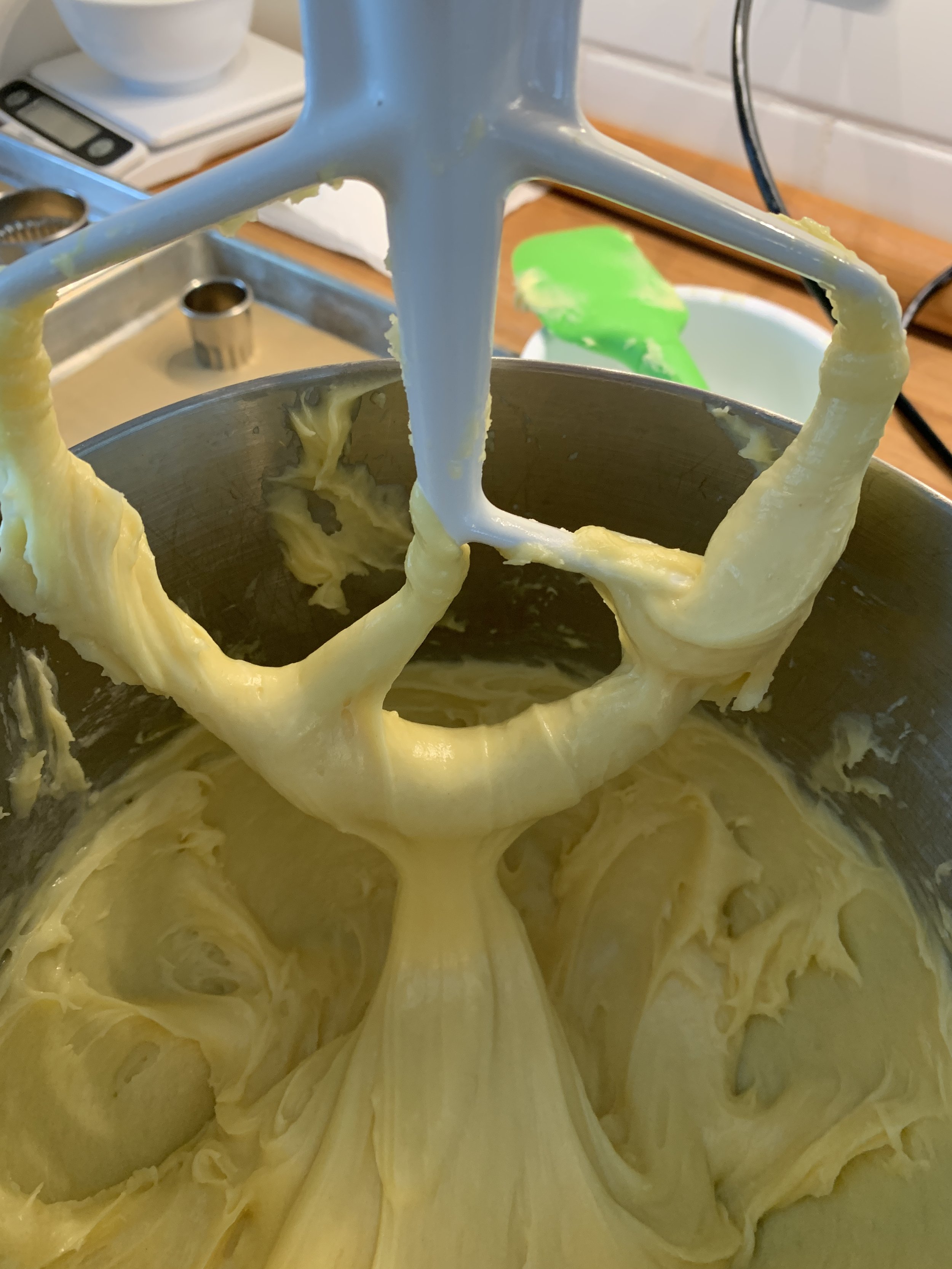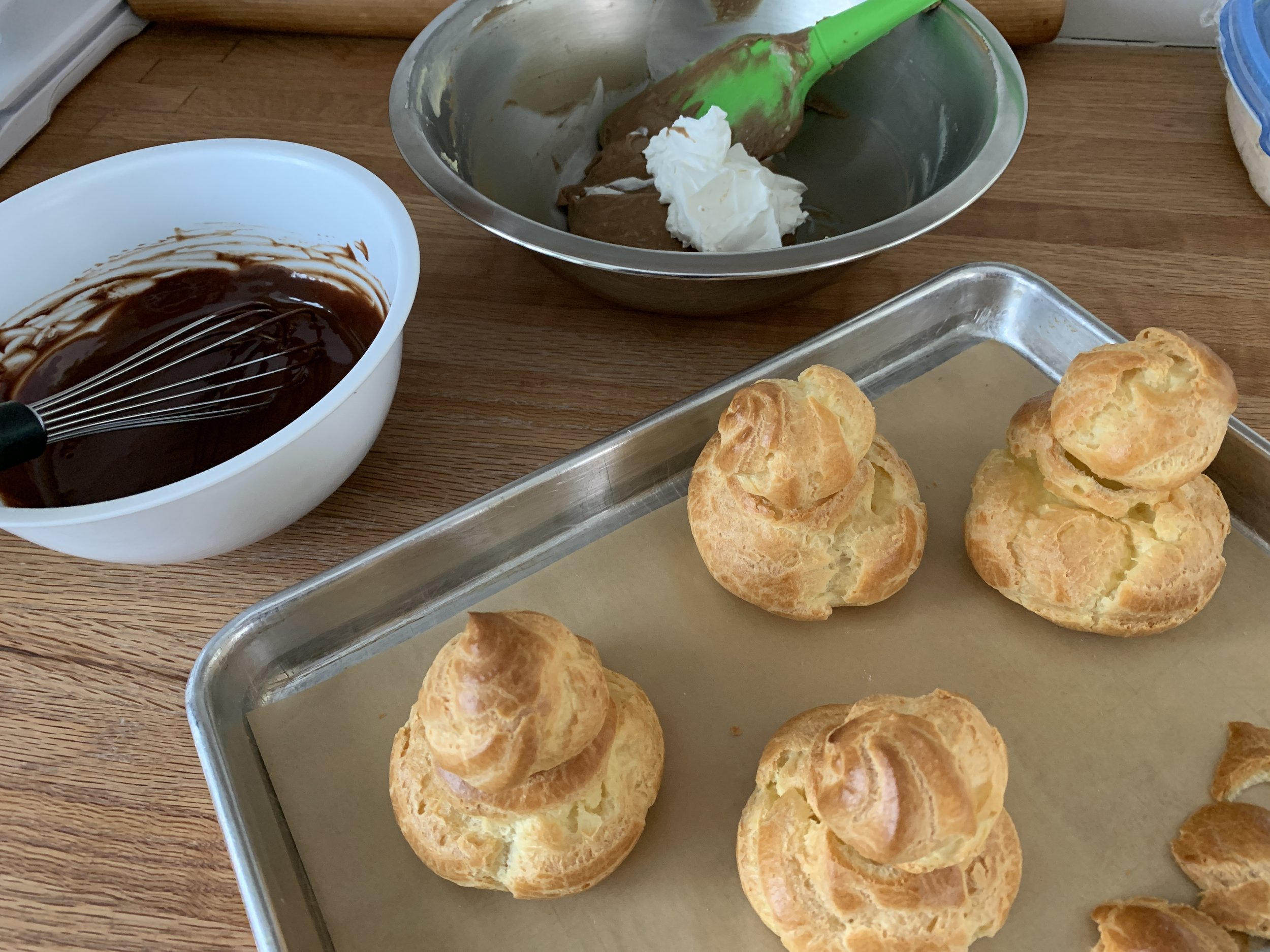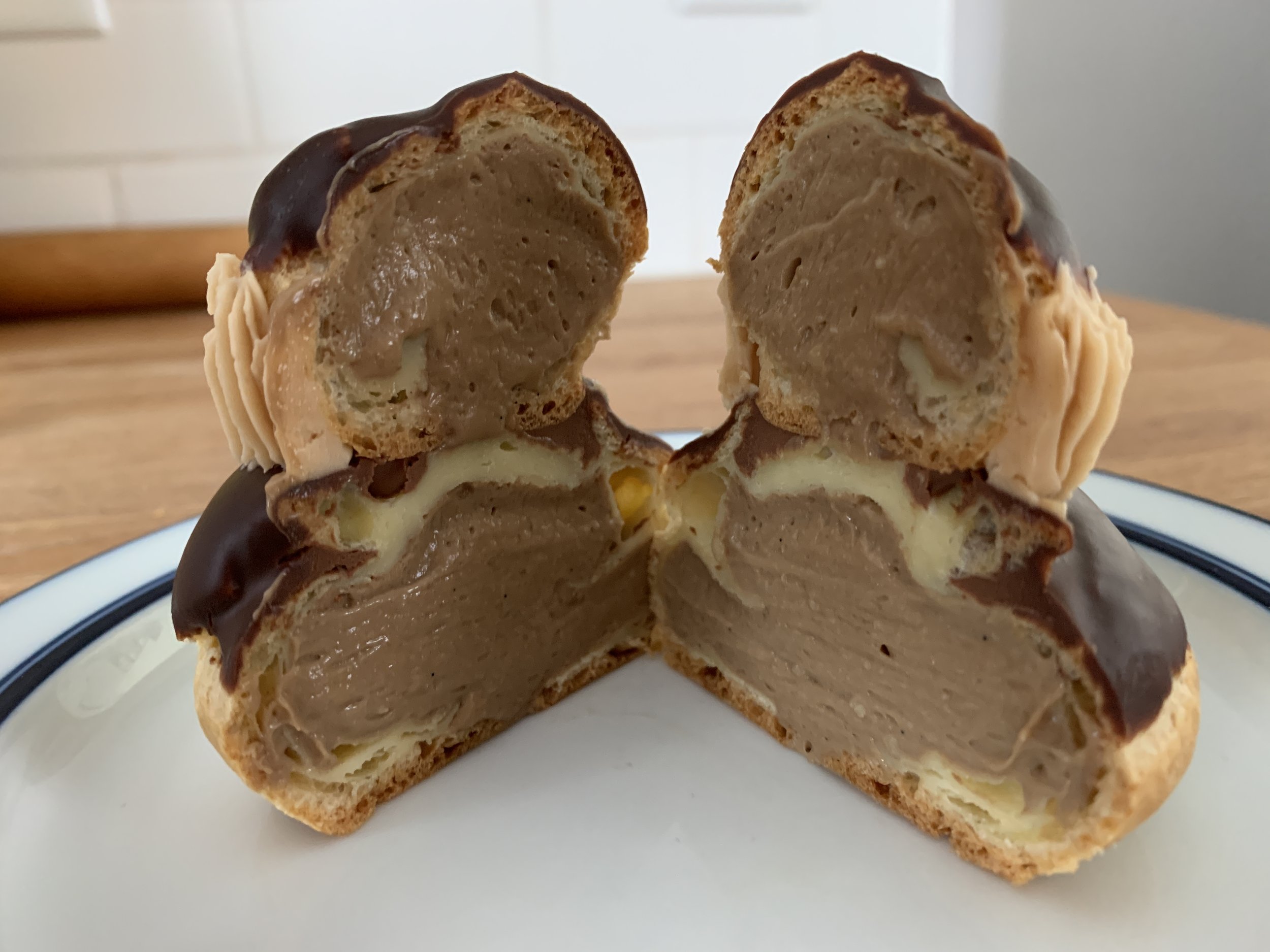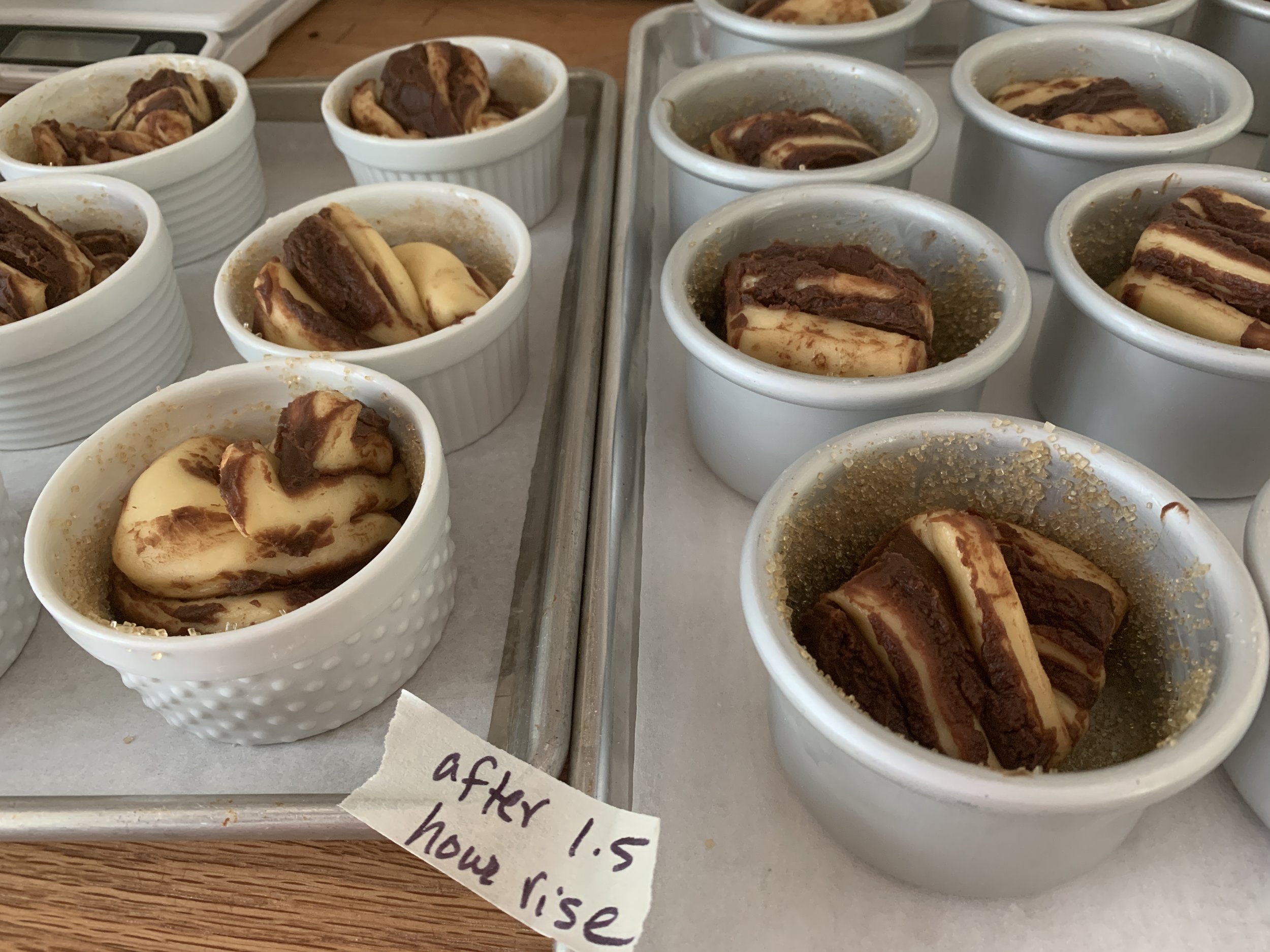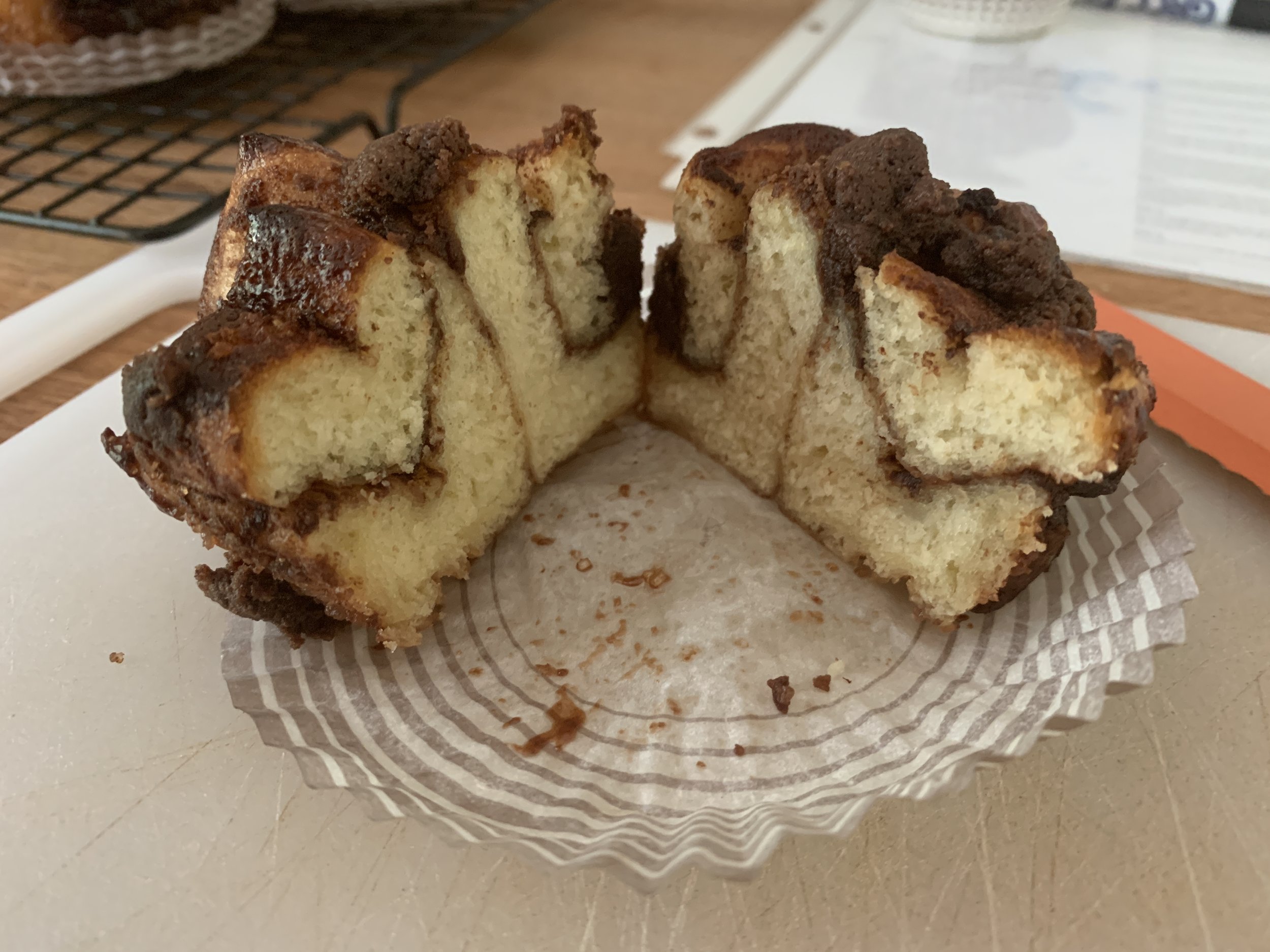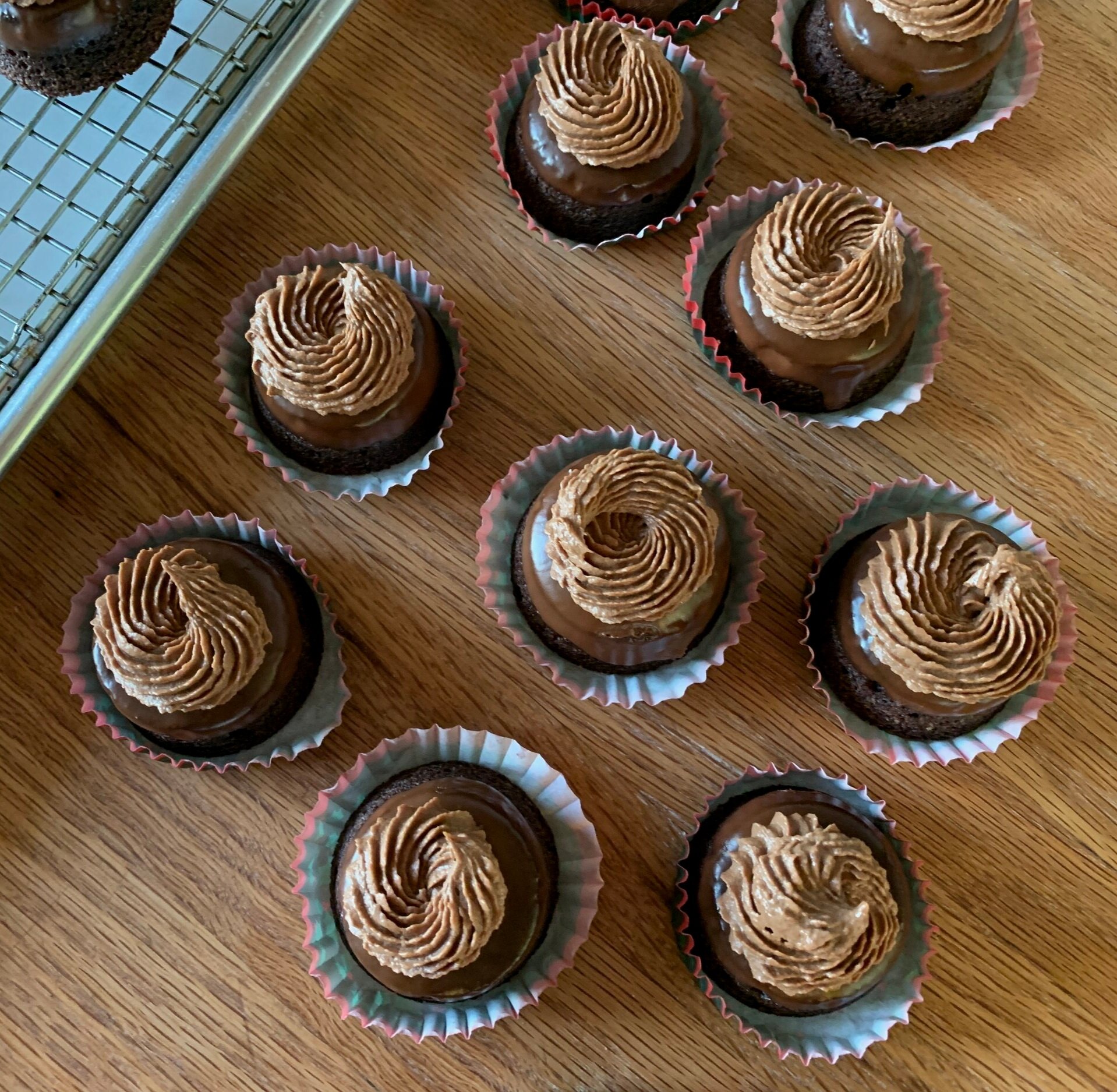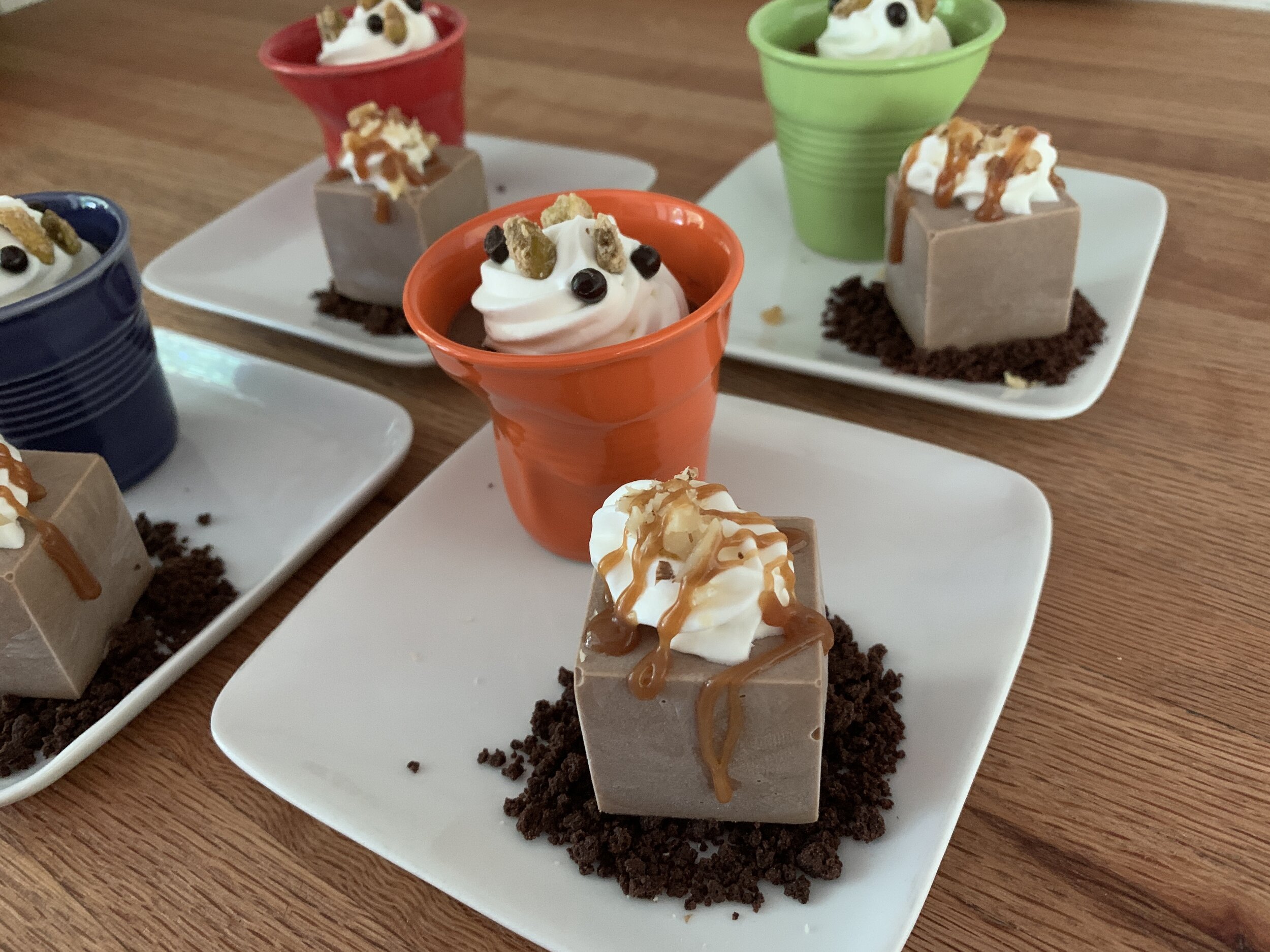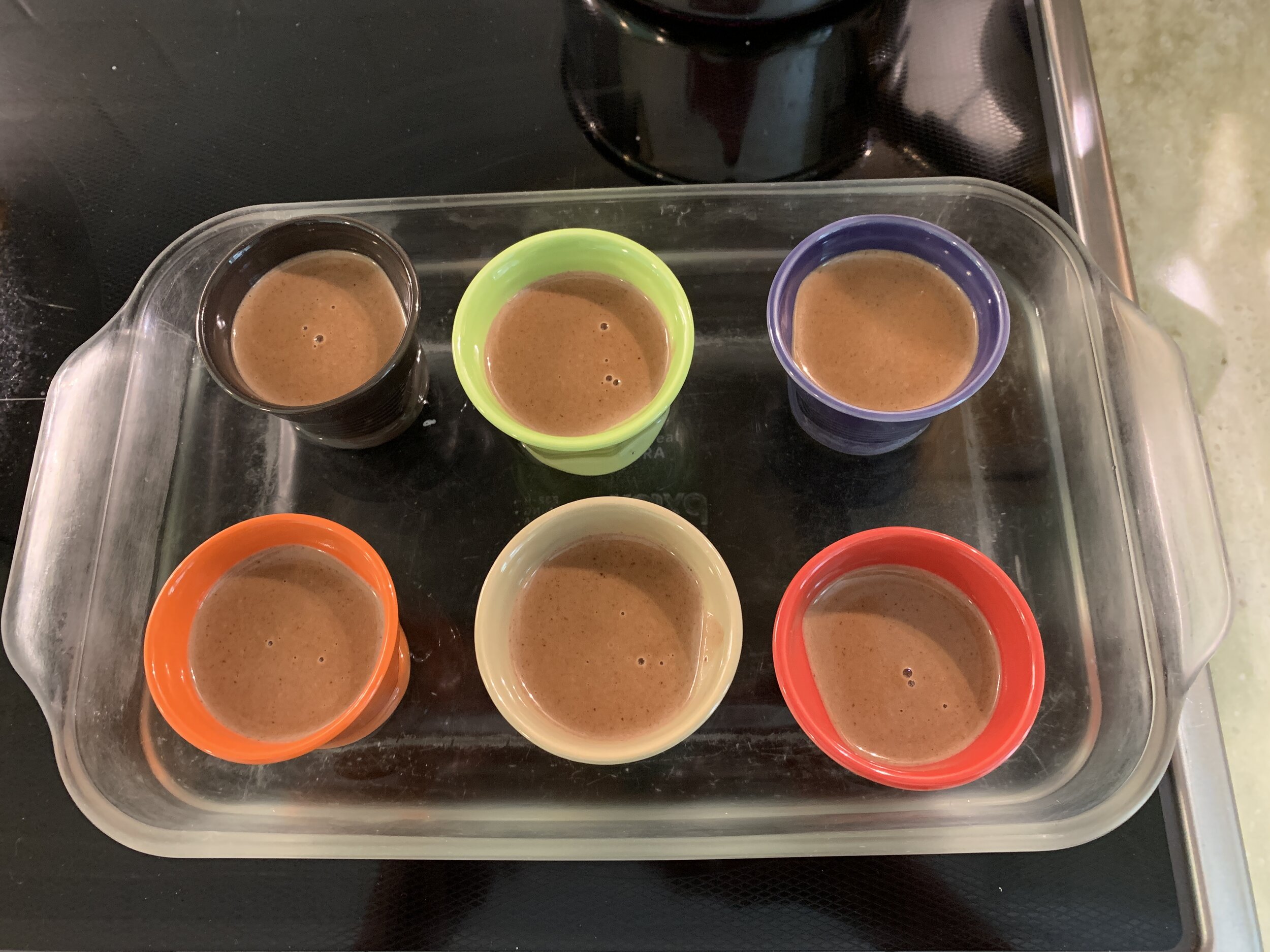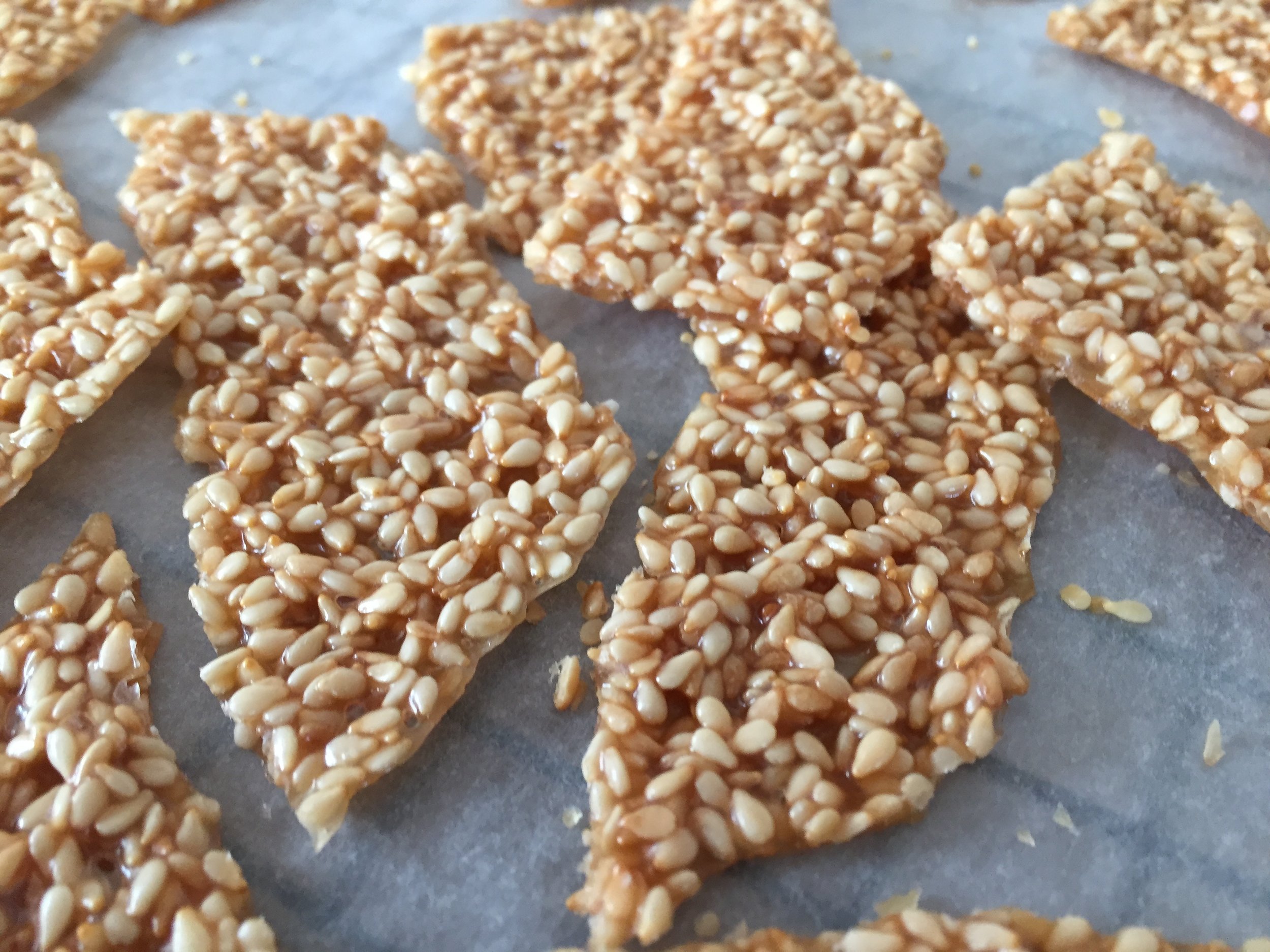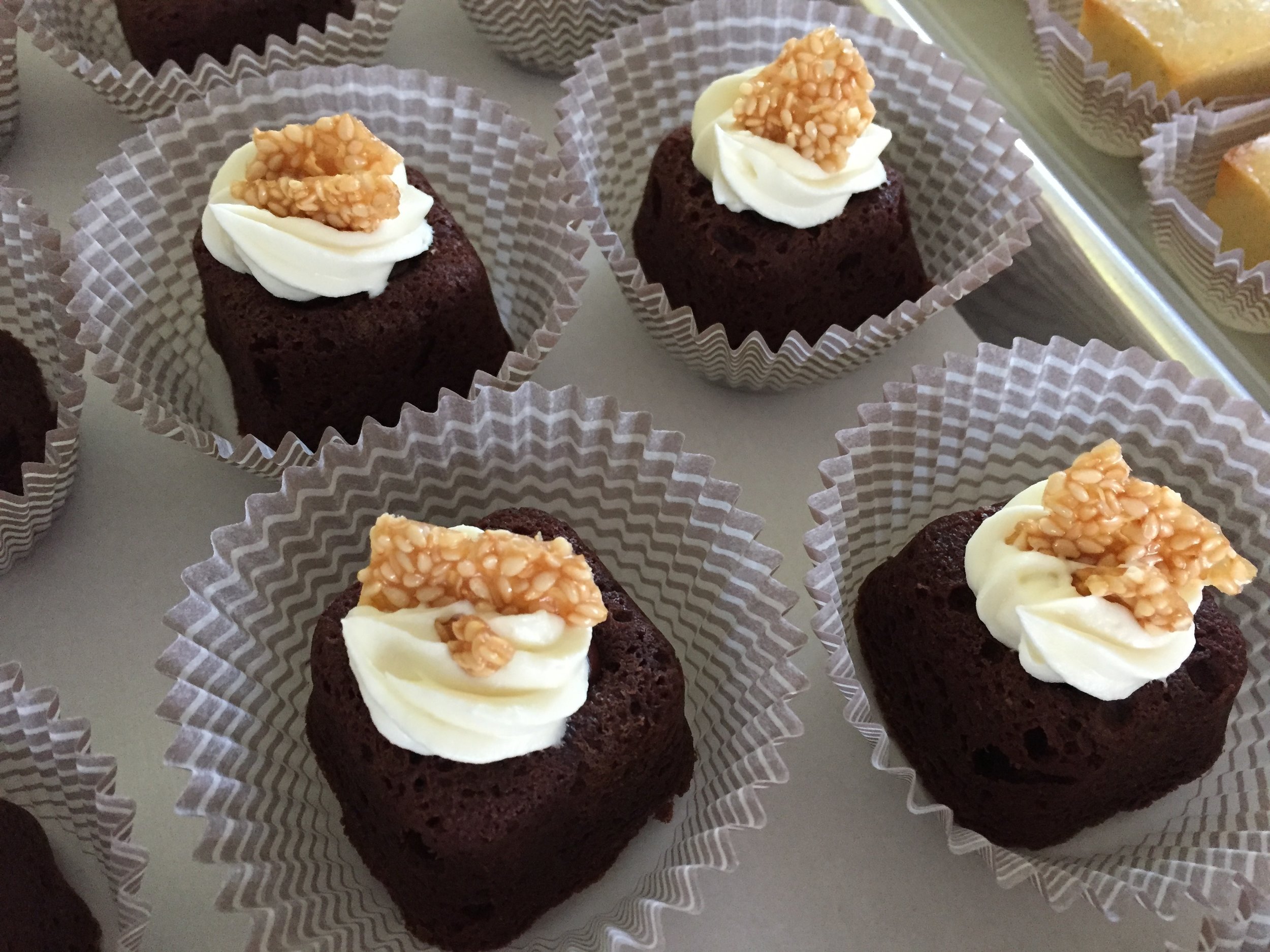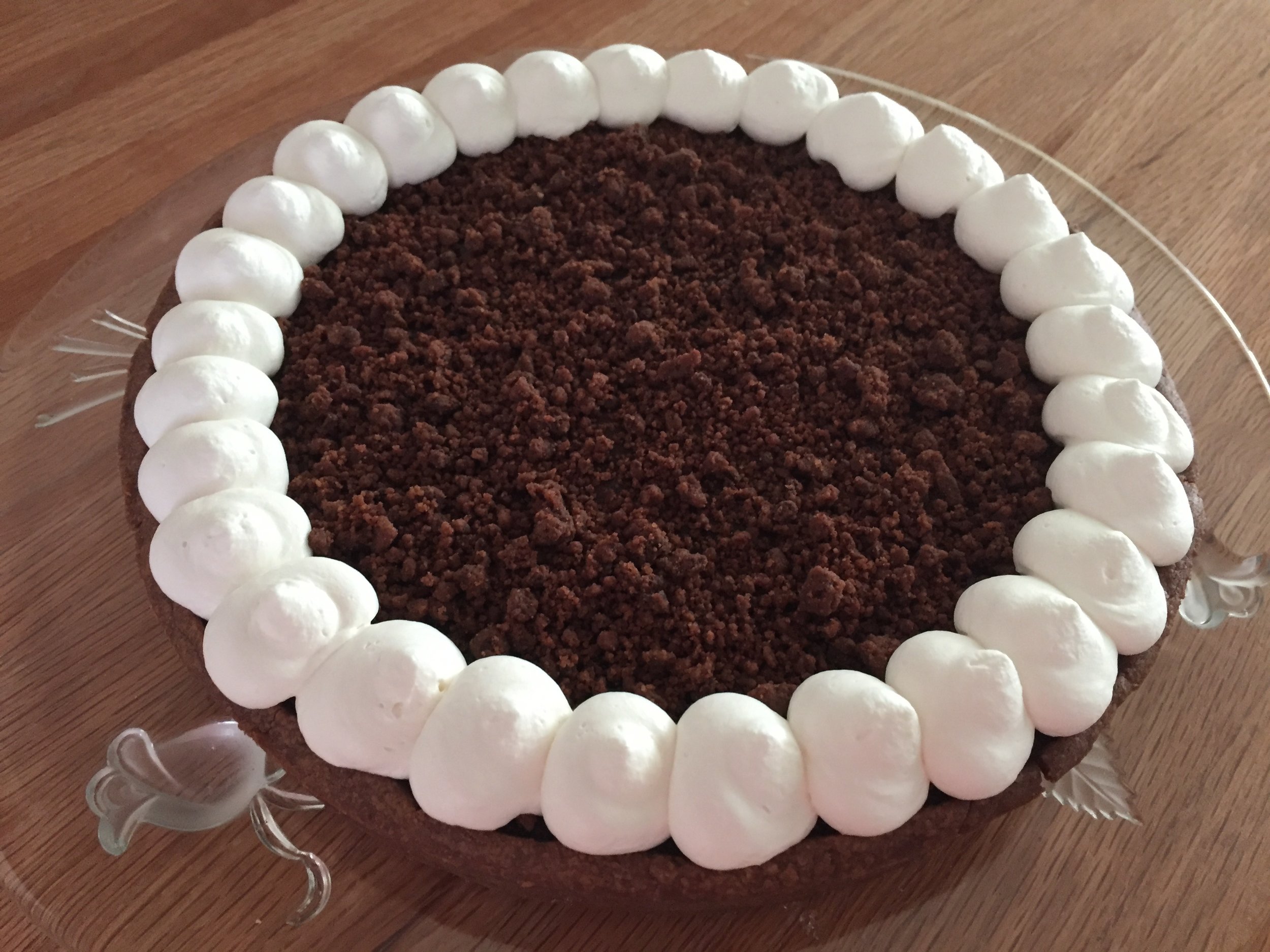Before I start on the topic at hand, here are some pics of the delectable chocolate bread pudding I made using the left over chocolate croissant spirals from my last post. I diced up the spirals, poured a basic chocolate custard over the pieces in my favorite square C&B ramekins, sprinkled on some vanilla sugar and baked 'em in a water bath.
 |
| just out of the oven |
Just imagine one served warm with a scoop of vanilla ice cream. Yes, indeed.
Now on to the task at hand. What most of us know as napoleon,
mille-feuille (literally "a thousand leaves") is that classic combination of puff pastry layered with vanilla pastry cream. Of course, as is true of pretty much any classic you can think of, there are a multitude of ways to create variations on the theme.
Years ago, before pastry school was even a gleam in my eye, I made versions of this dessert using good old Pepperidge Farm puff pastry sheets, cut into squares and baked, then simply layered with a cream or custard and fresh fruit and/or a fruit
coulis. Always good.
Once pastry school was under my belt and I experienced what Paris had to offer,
mille-feuille was often on my tasting hit list. During my
stage at Pascal Pinaud's shop on
rue Monge in the 5th, raspberry-lemon
mille-feuille was offered as a special treat only on Sundays.
When done well, the combination of crisp, flaky, buttery puff and smooth and creamy custard can't be beat.
Flash forward to the spring of 2013 when I took a class at Christophe Felder's school in Paris on
mille-feuille chocolat. I purchased his pastry tome
Patisserie! and have been drawn into it lately to refresh myself on the classics as well as get inspiration for some new ideas (new tart coming up soon!). My eyes lit up at the recipe for
mille-feuille chocolat and
off I went on a trip down
feuilletage chocolat lane.
This recipe calls for cocoa powder added to the
détrempe, just as in my recent chocolate croissant experiment.
 |
| les ingredients |
I made half a recipe: 250 gm flour, 30 gm cocoa powder, 130 ml cold water, 43 gm melted butter and 5 gm salt mixed together just until everything is incorporated.
 |
| the creature from the Black Lagoon! |
The
détrempe felt dry, and it looked a lot more blotchy than when I make regular puff pastry. I gave it a couple hour rest in the fridge and prepared the 168 gm butter block.
 |
| ready for the beurrage |
Once I completed the
beurrage and started the folds/turns the dough in general started to look a little better, but still blotchy.
 |
| after the first two turns - yikes! |
But once all the turns were complete the dough looked and felt better - there was hope after all.
 |
| after six turns |
I held the dough in the fridge overnight for use the following day. Otherwise I would typically pop it into the freezer for another time.
When rolling out the puff for
mille-feuille, it's important to roll it about 2-3 mm thick. I divided the dough in two and rolled each piece to fit a quarter sheet pan.
It's important to let the dough rest - otherwise it shrinks when baking (as you'll see in the upcoming pictures). It's also a good rule to freeze the rolled out puff for 10 minutes or so before baking to help stabilize the dough.
 |
| ready to bake |
For comparison I baked one quarter sheet with a cooling grid over the pan (seen above) to help limit the puff's rise and the second one topped with a piece of parchment and a second sheet pan to weigh it down (the generally recommended method to keep puff under control).
I did NOT prick either one with a fork, having found instructions on line with and without (Felder's approach) fork pricking.
What really happened in the oven? The weighted down version puffed anyway, and I actually pushed it down a couple of times during baking to try and keep it flat.
The one with the grid over it puffed up to the limits of the grid, but it ended up more irregular with undulating waves across the surface.
And both of them shrank.
Having chosen the weighted down piece for my assembly, I trimmed the edges and cut it into thirds,
and then a dust of powdered sugar and under the broiler for a couple of minutes to caramelize.
On to the assembly!
I made a simple whipped ganache filling using 250 gm heavy cream and 70 gm chocolate. While I was piping the first layer I was reminded of the
radiatore pasta Steve and I had just eaten a couple of nights before - ruffles!
 |
| first whipped ganache layer |
 |
| second puff layer |
 |
| second whipped ganache layer |
 |
| completed layers |
Once all the layers were assembled I popped the whole thing into the fridge for 30 minutes before topping with a basic 1:1 ganache.
 |
| getting ready to spread the ganache |
 |
| used a decorative comb for design |
The result looked pretty cool, but the flavor of the puff was disappointing - rather boring and not terribly chocolatey. I also felt the puff layers were too thick and should have been more crisp and flakey.
What would I do differently next time? Use standard puff pastry (not chocolate), roll it more thinly, let it rest longer so as to reduce shrinkage, and prick the dough with a fork before weighing it down and baking it.
Steve's reaction? "What's so special about
mille-feuille?"
OK, OK - back to the drawing board!

